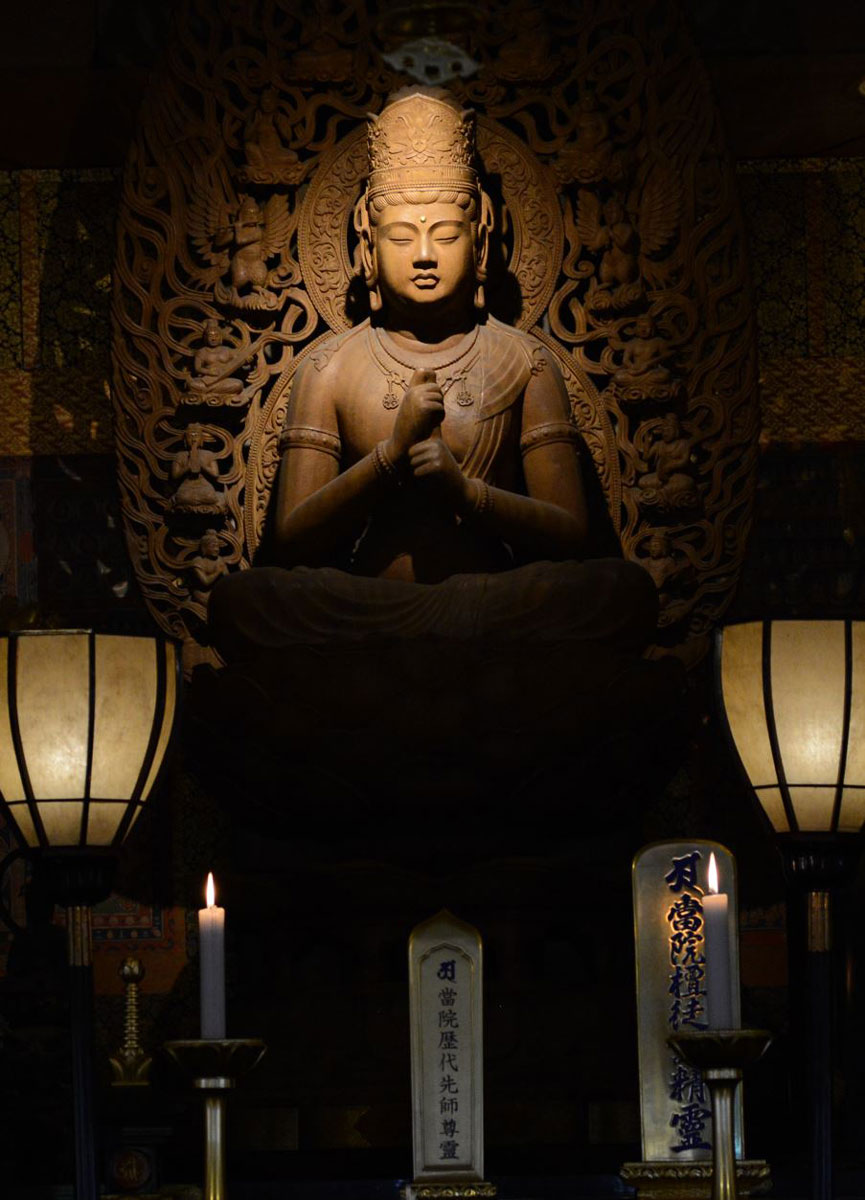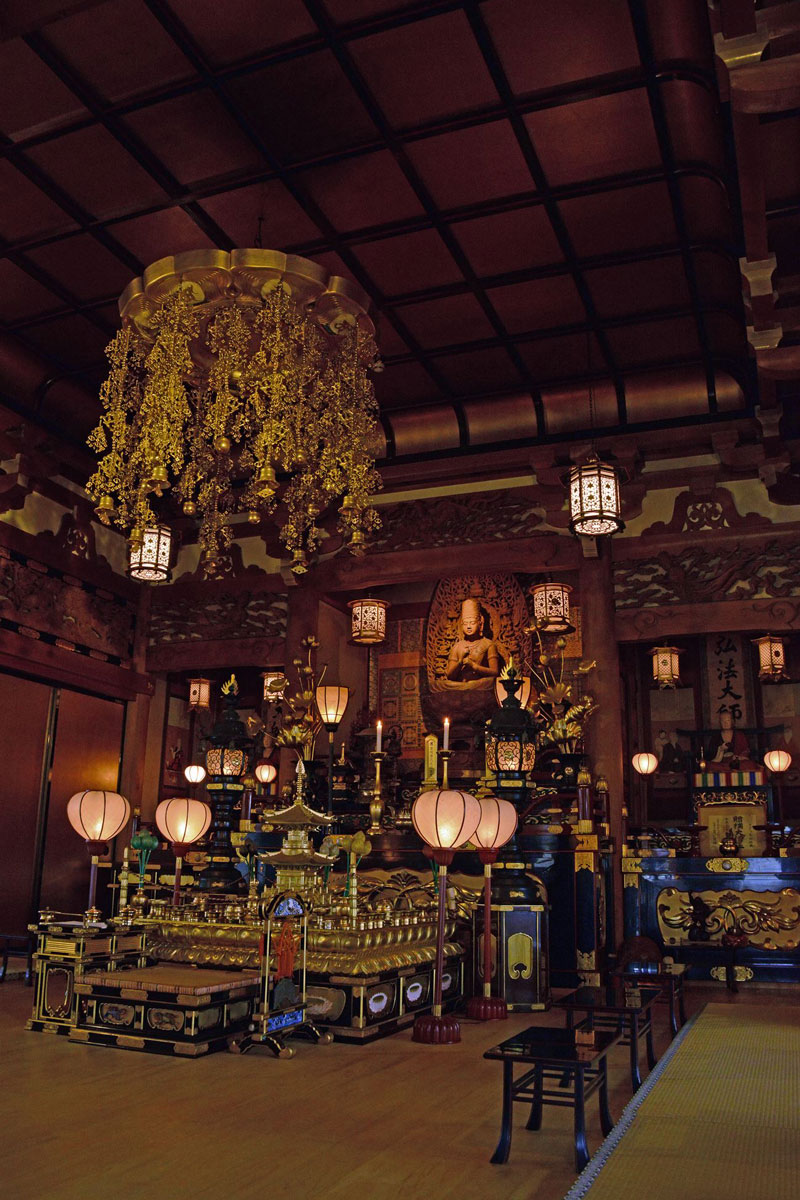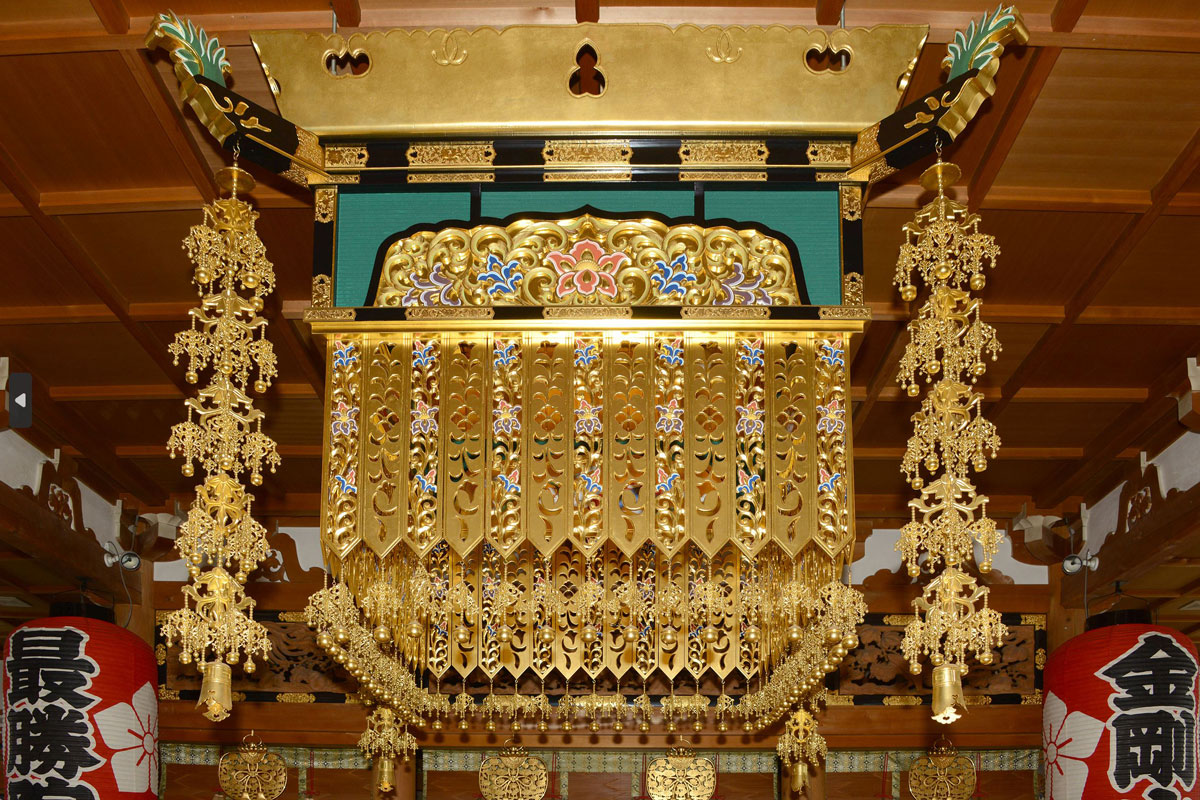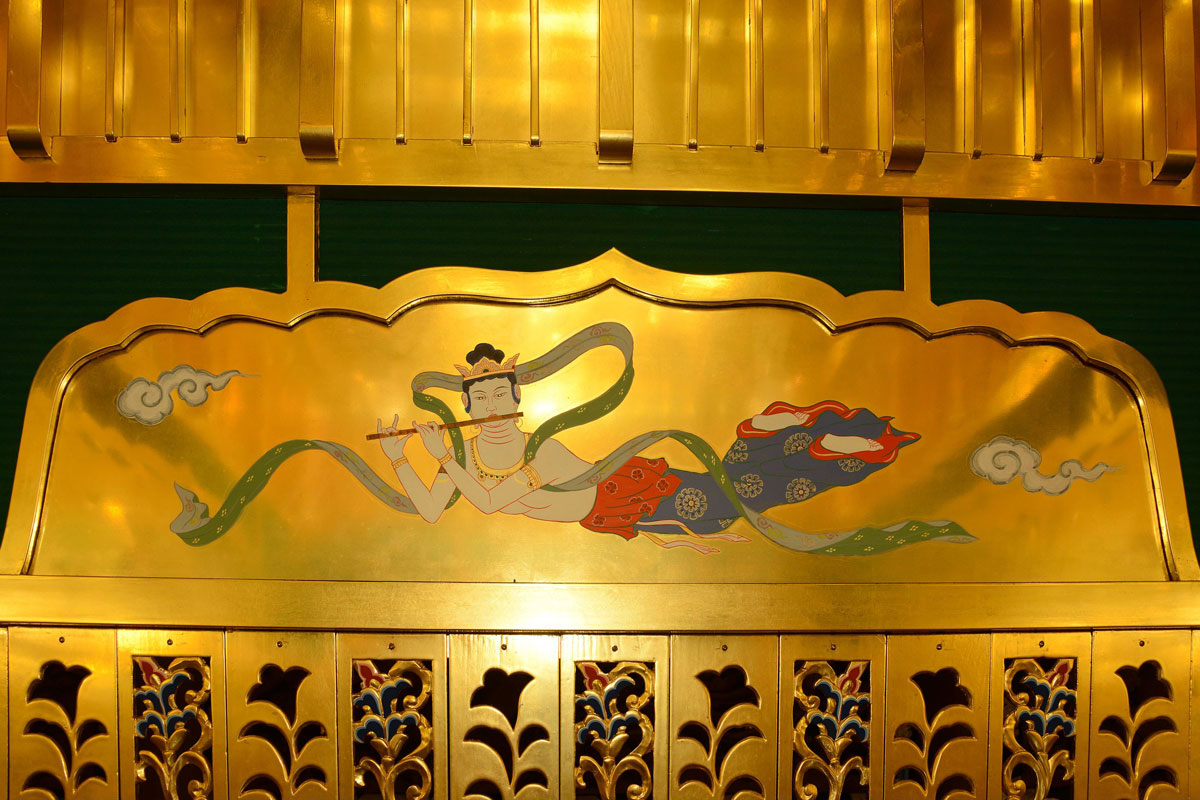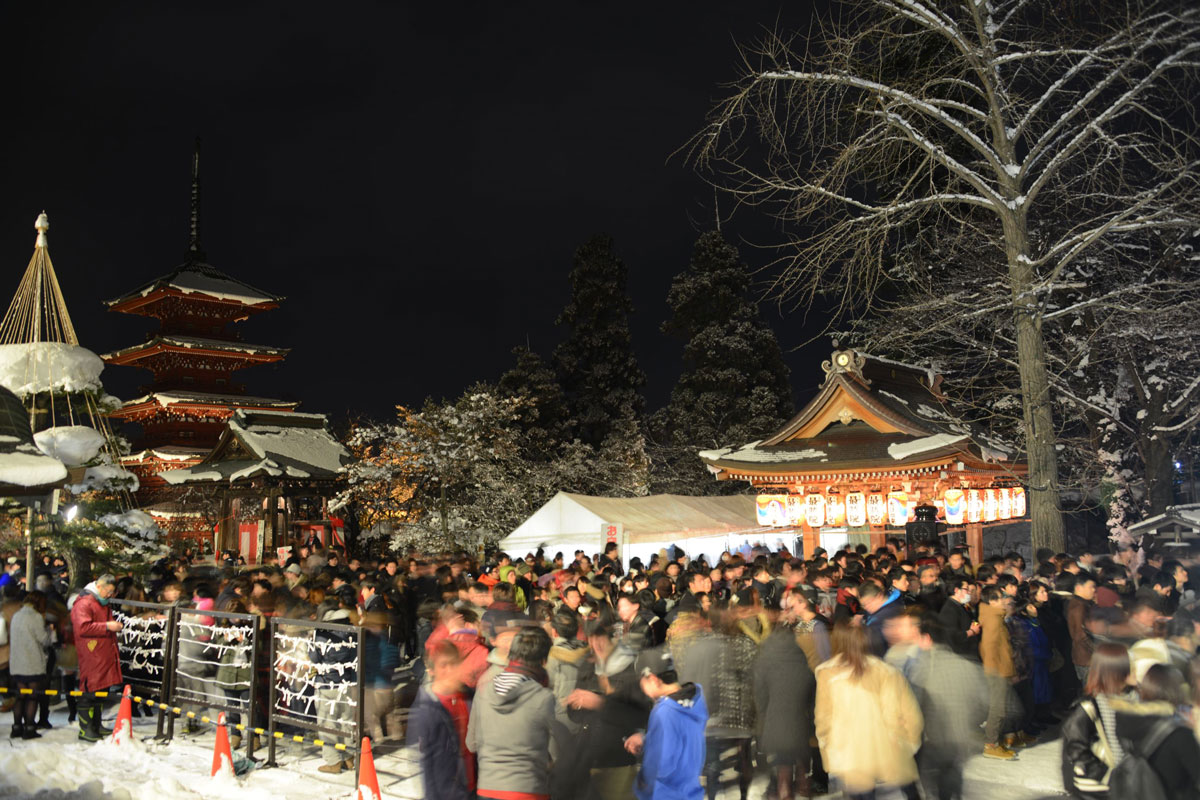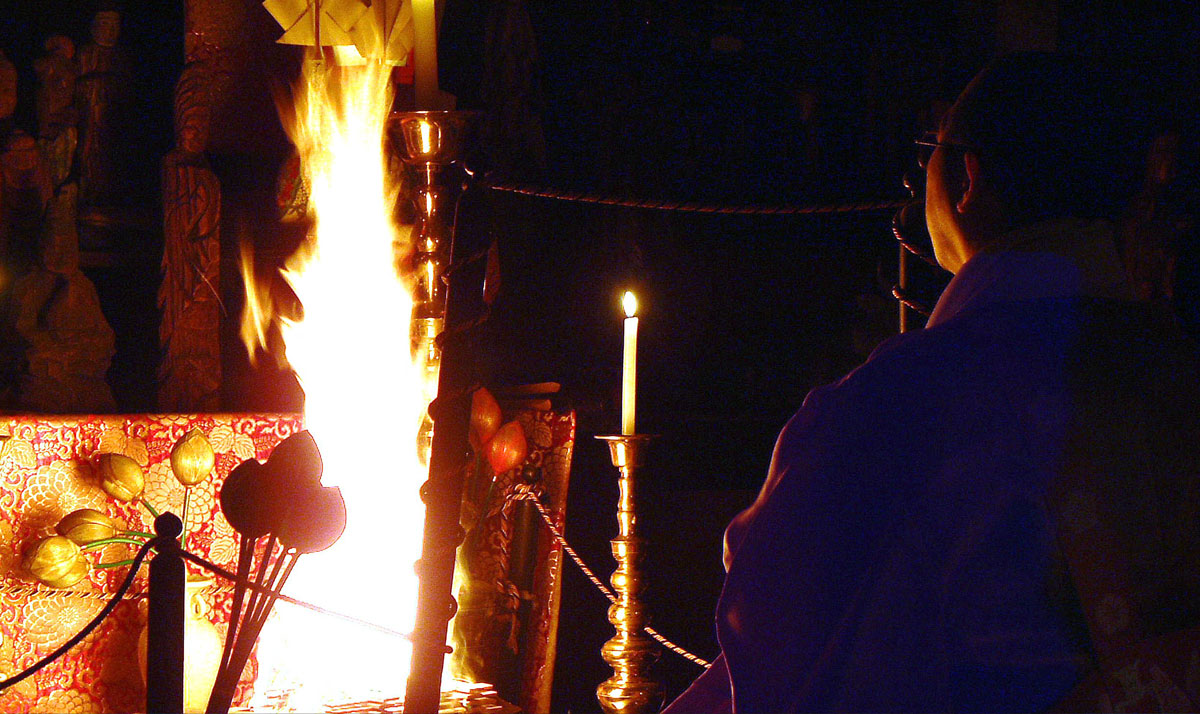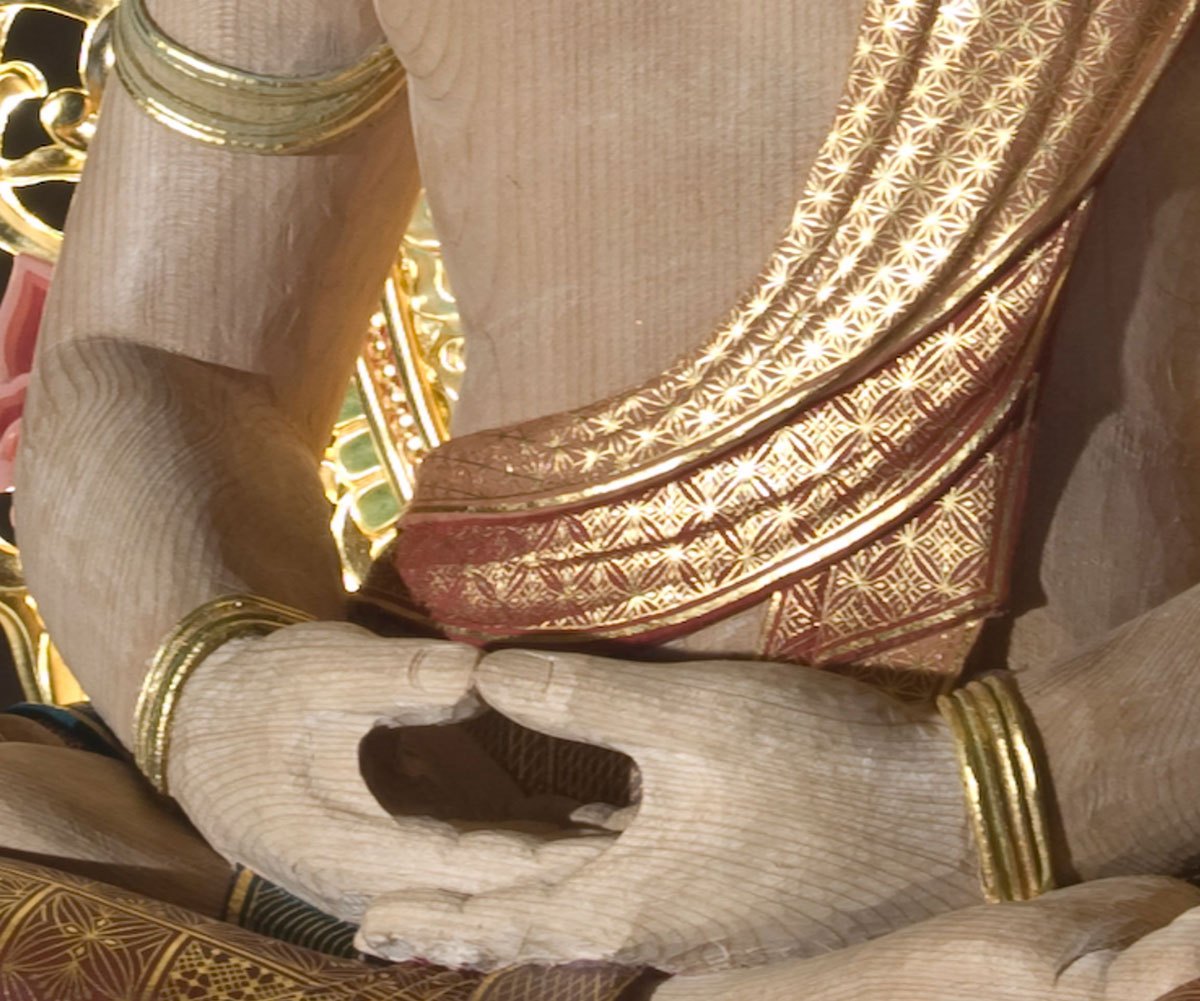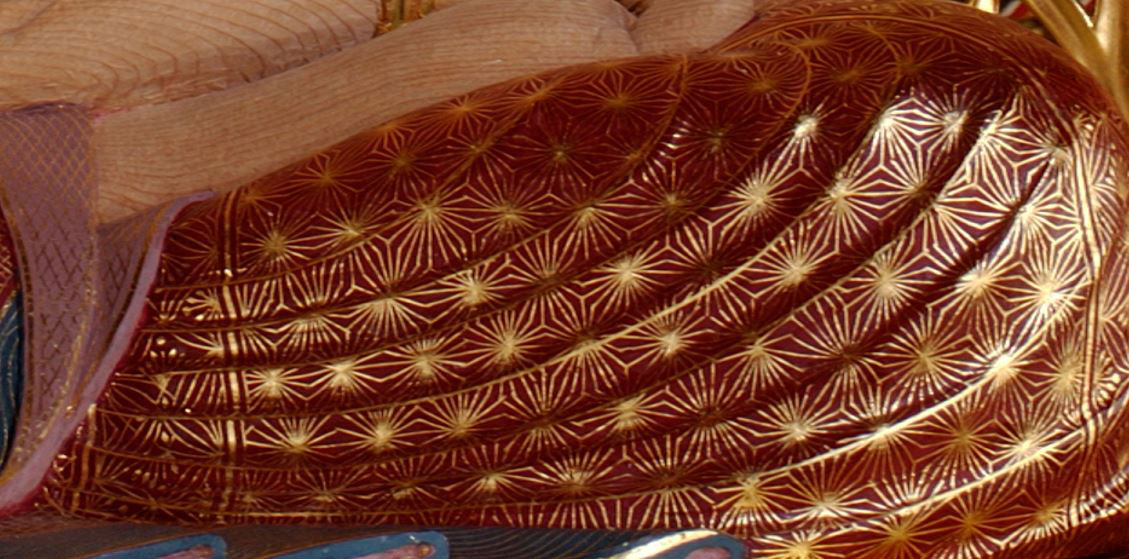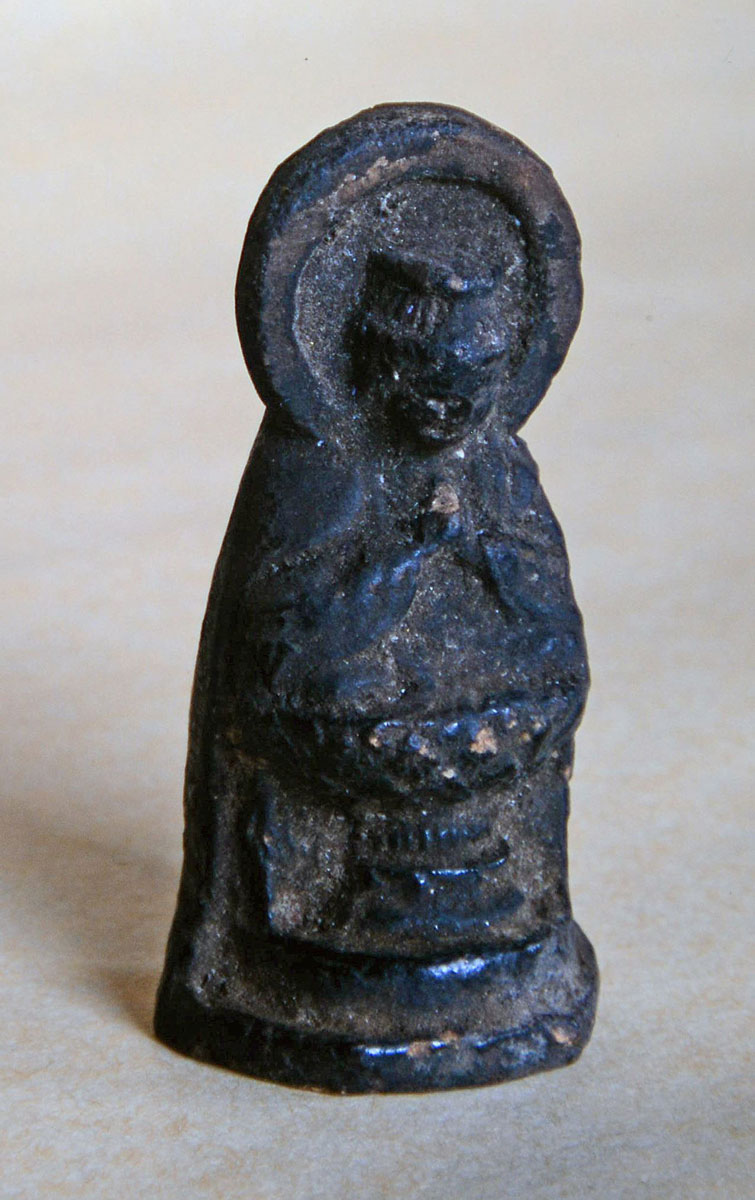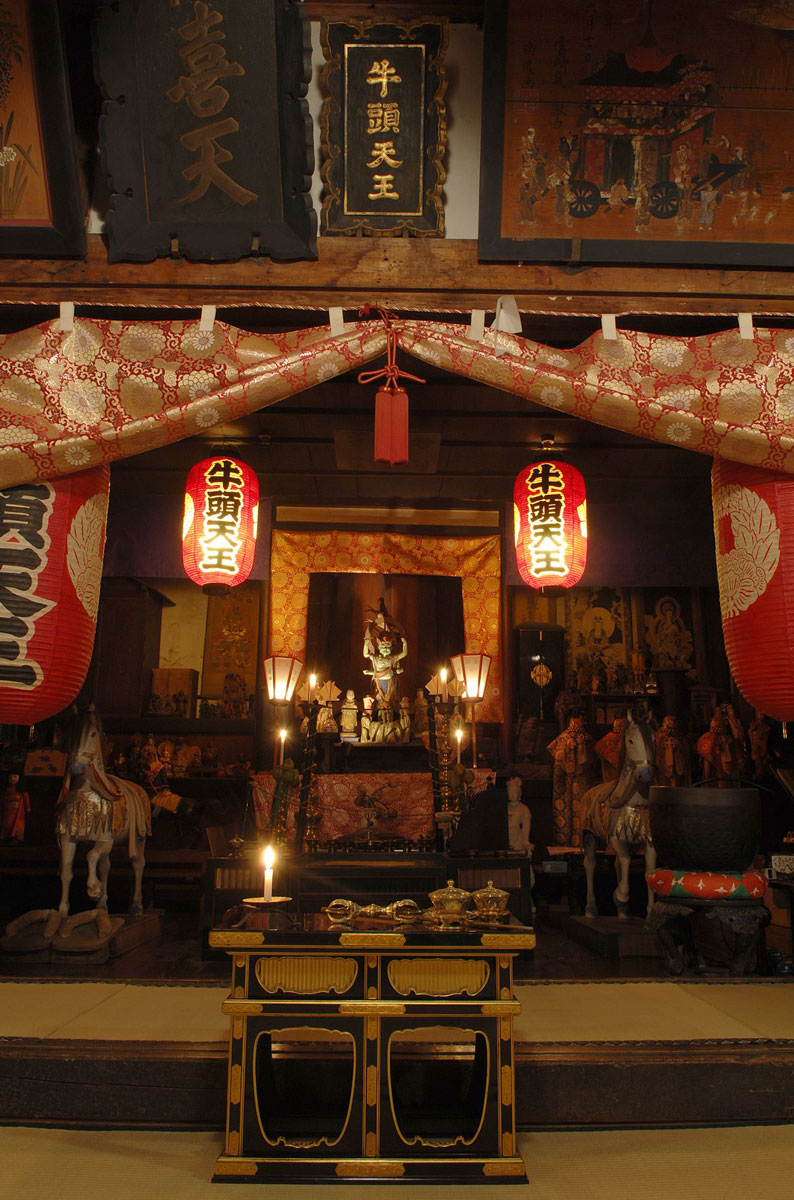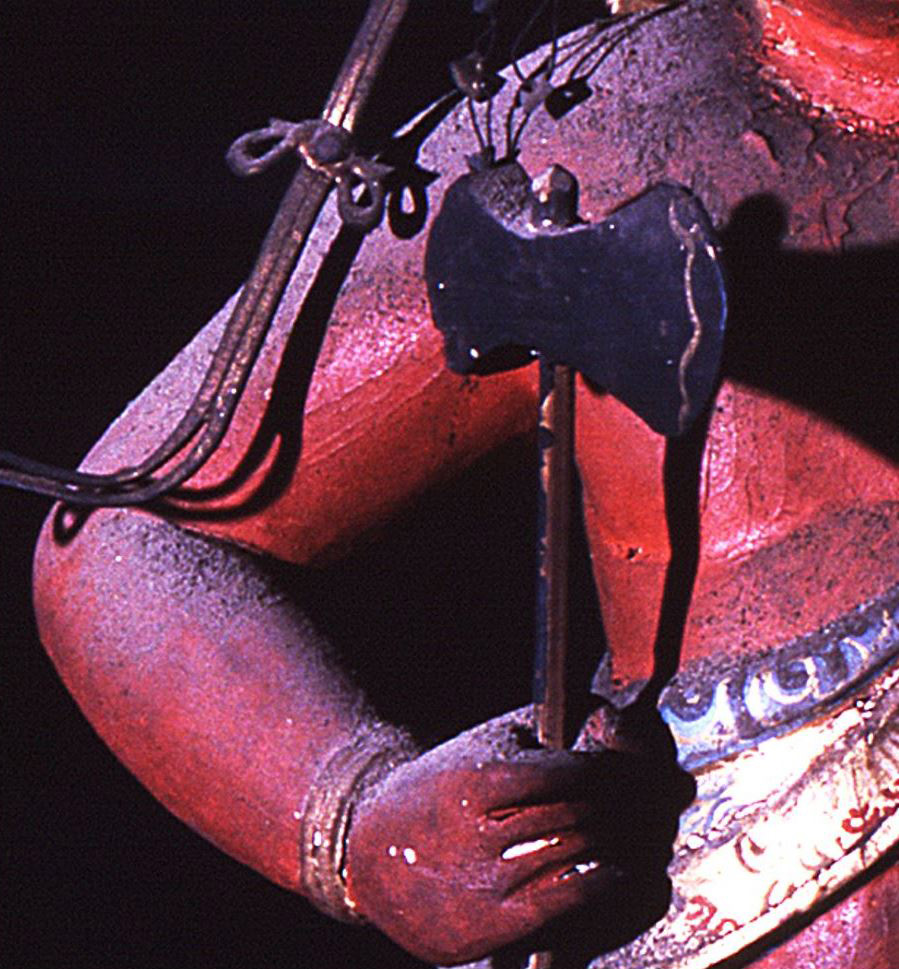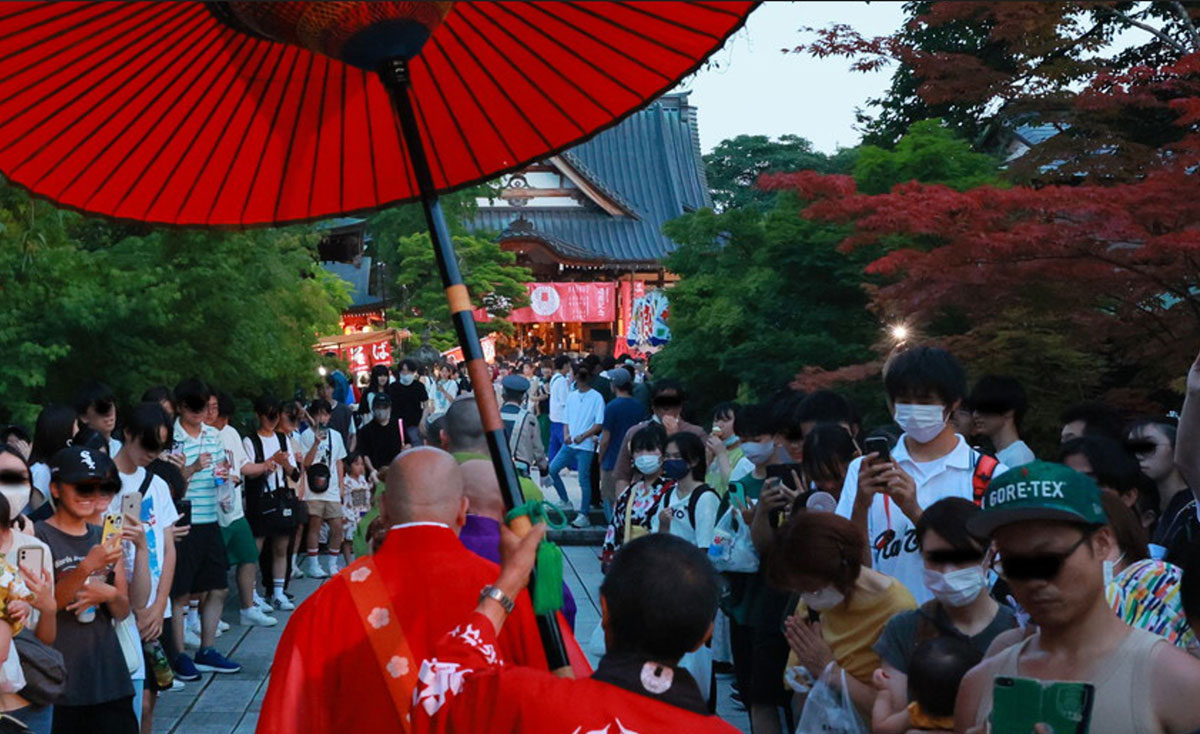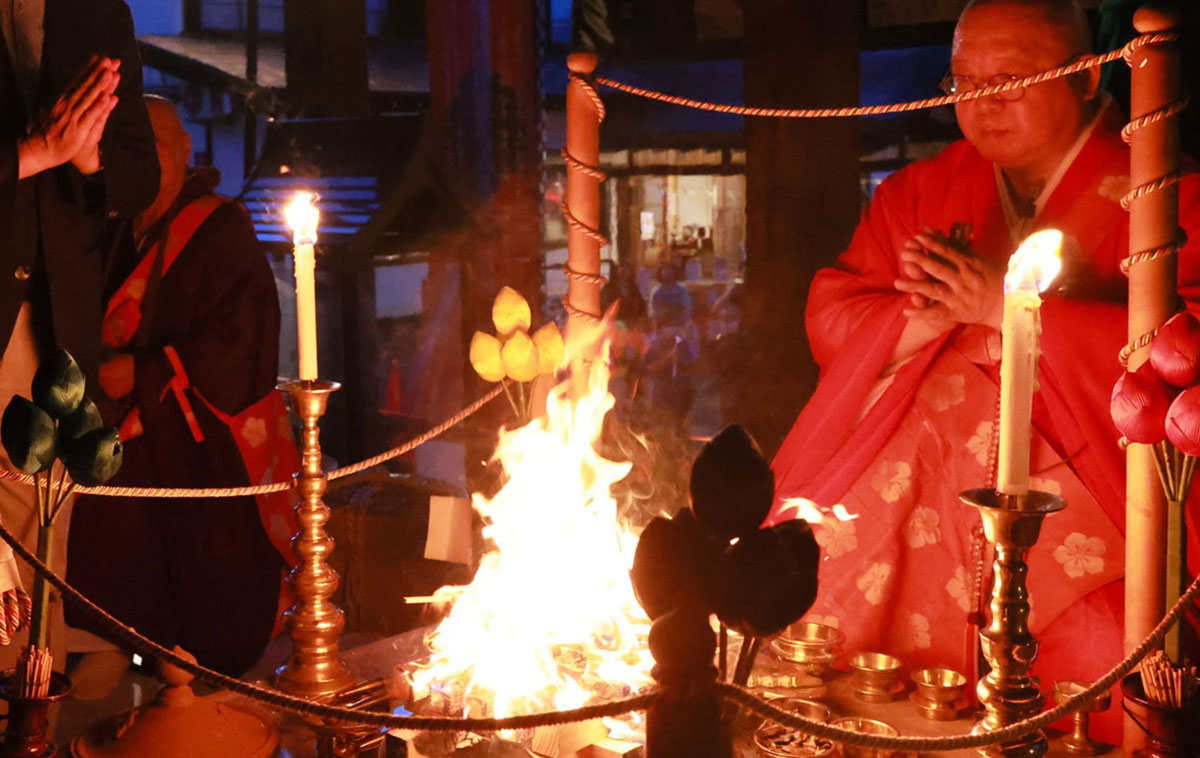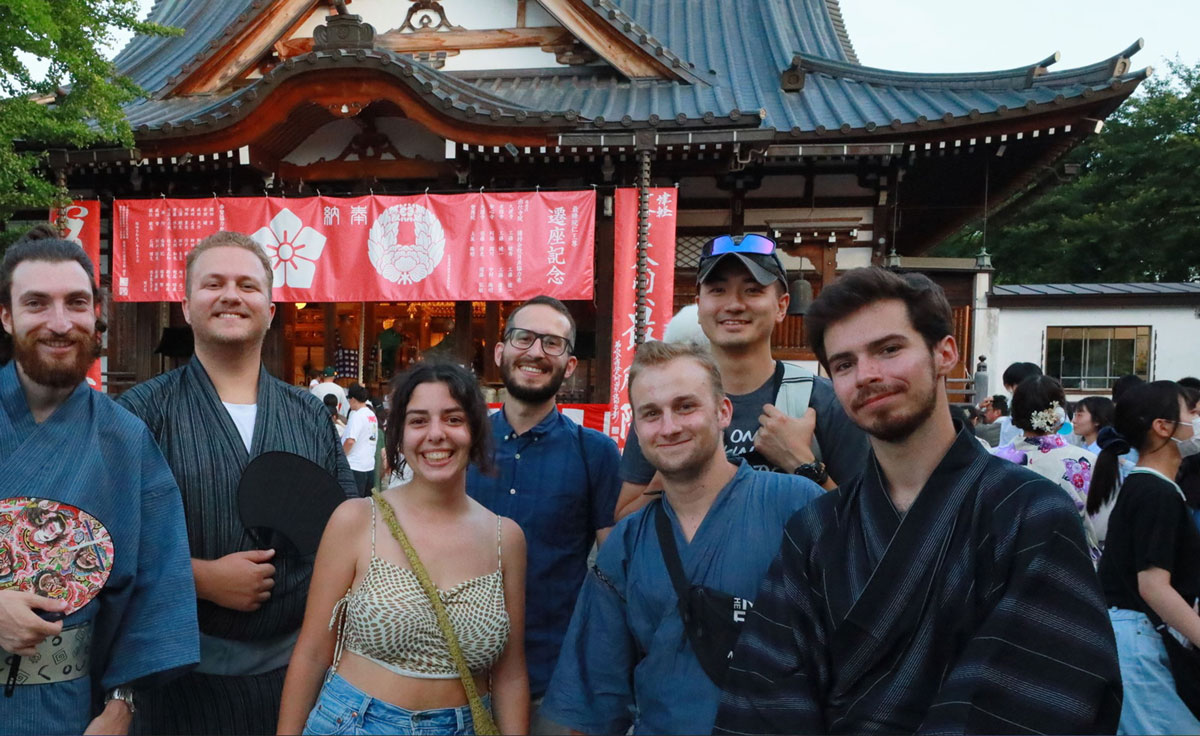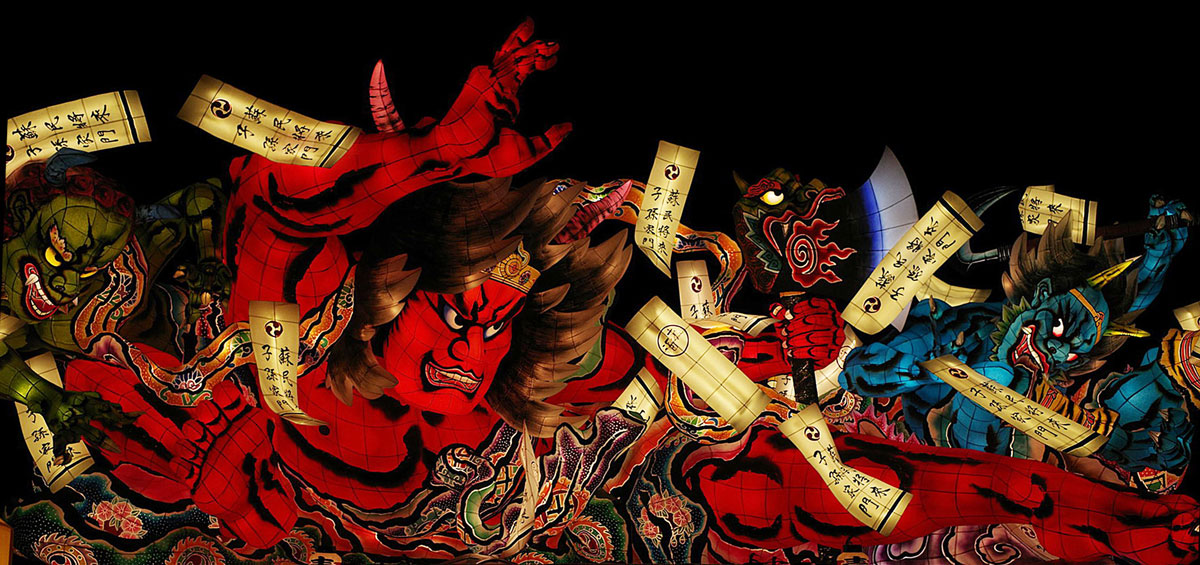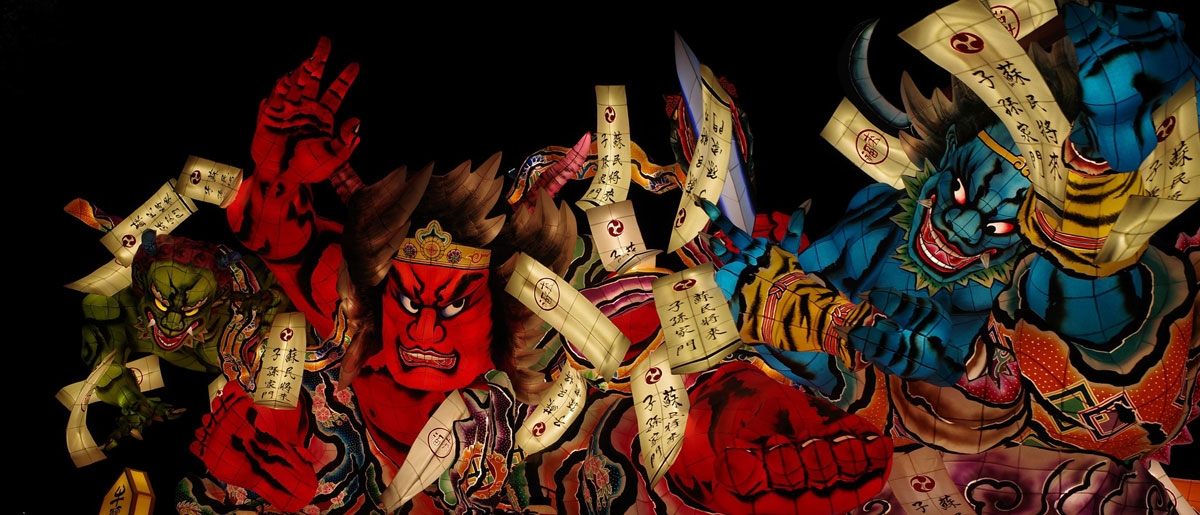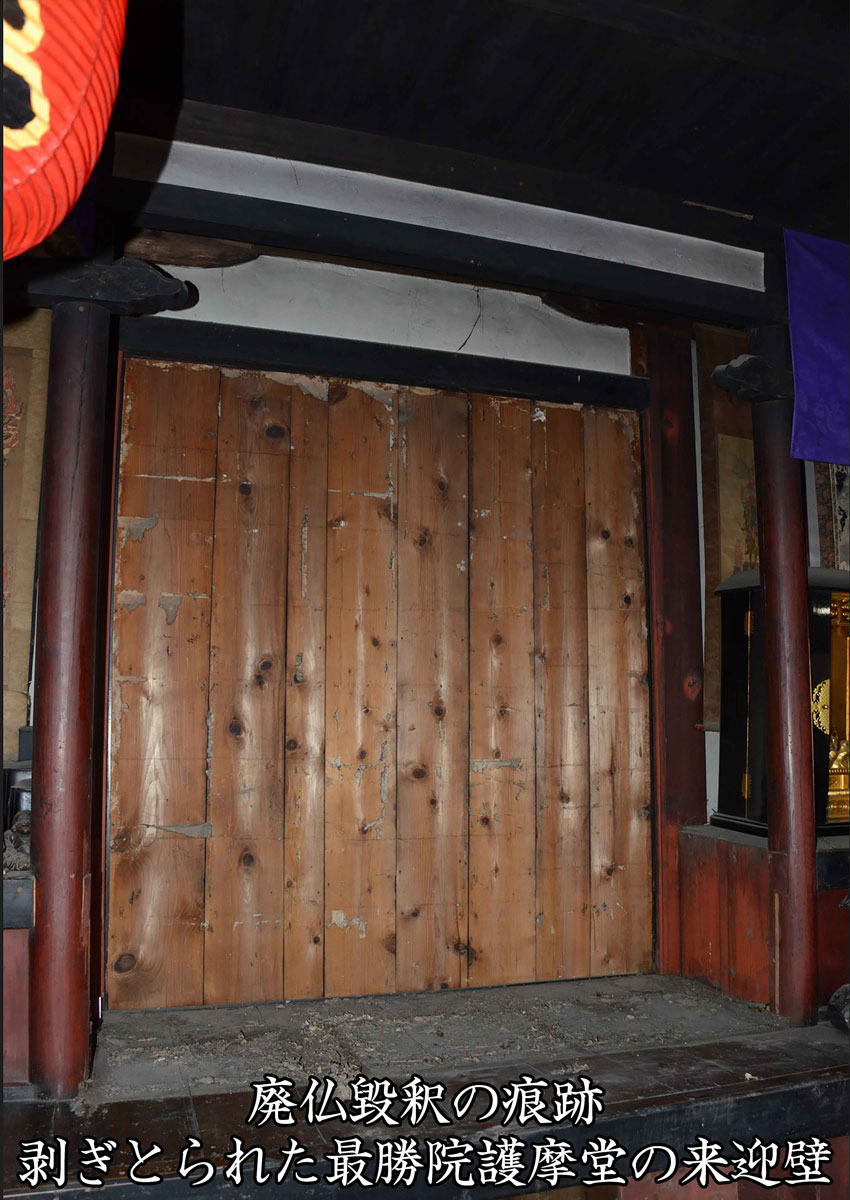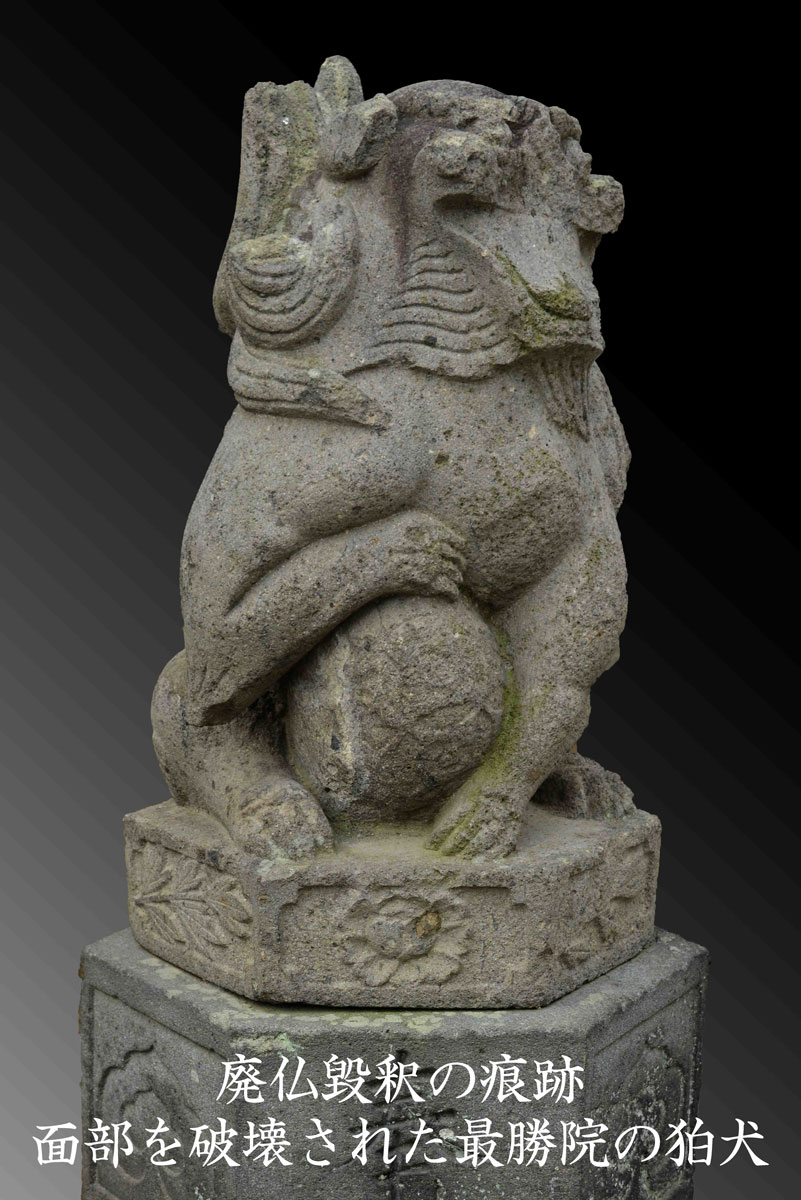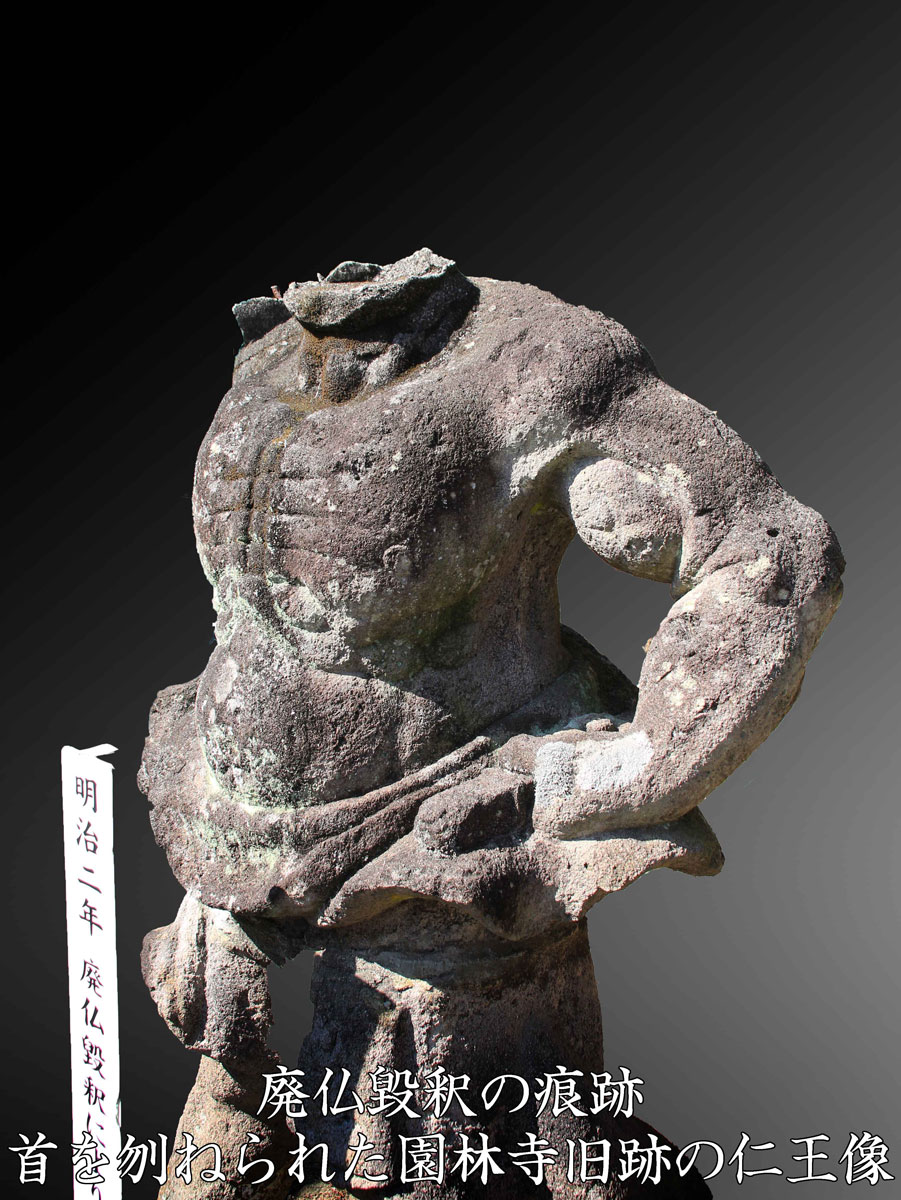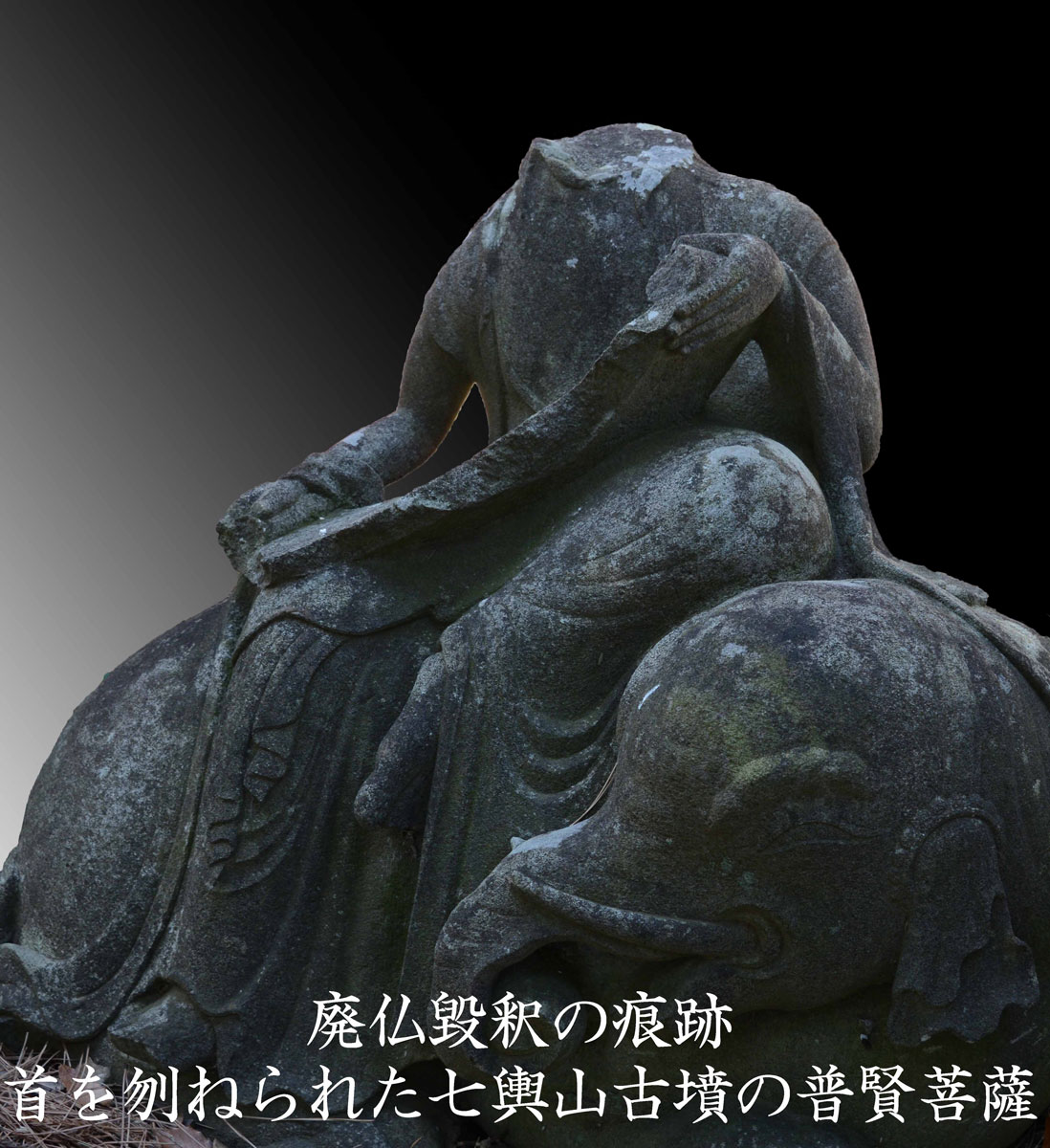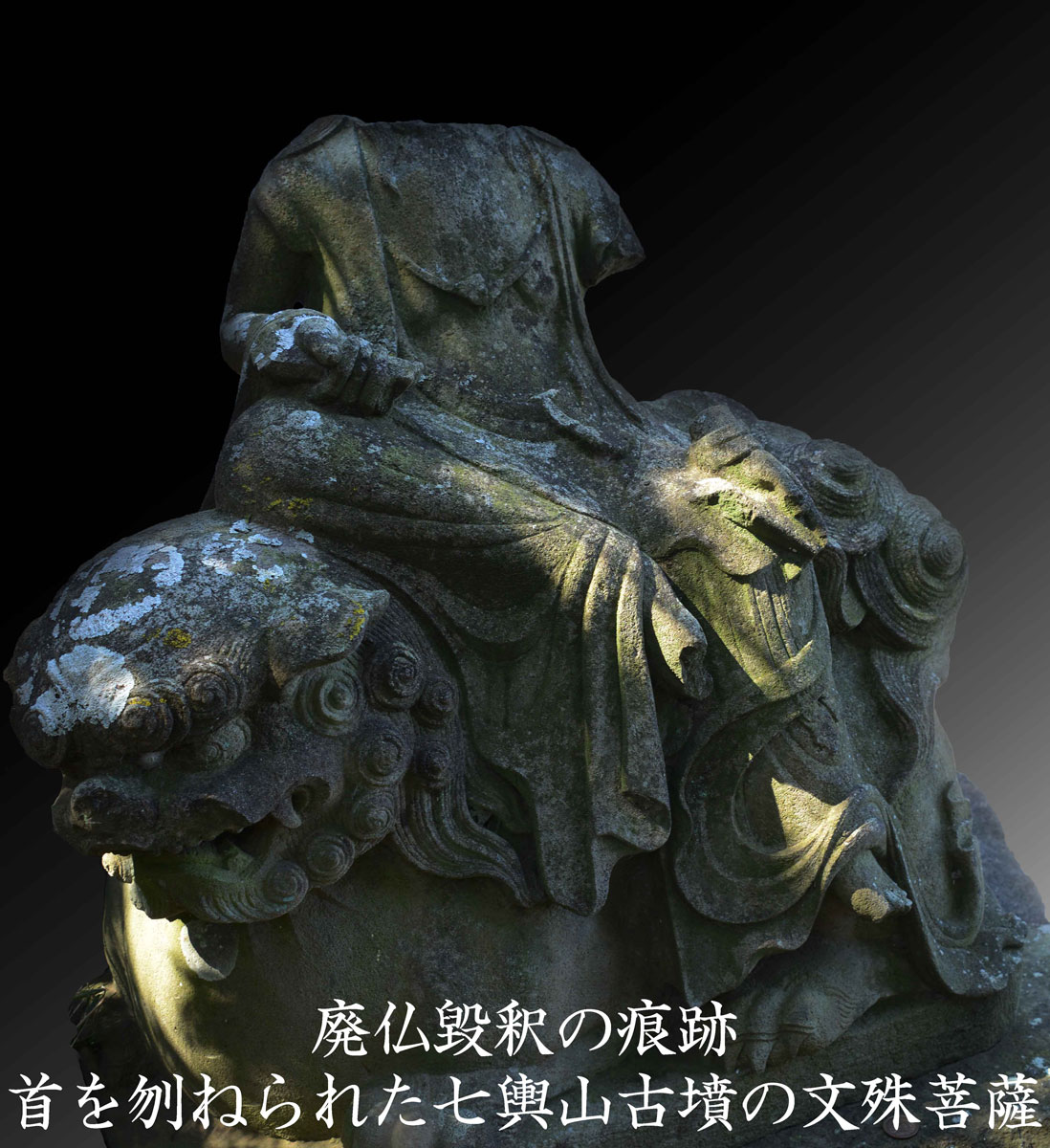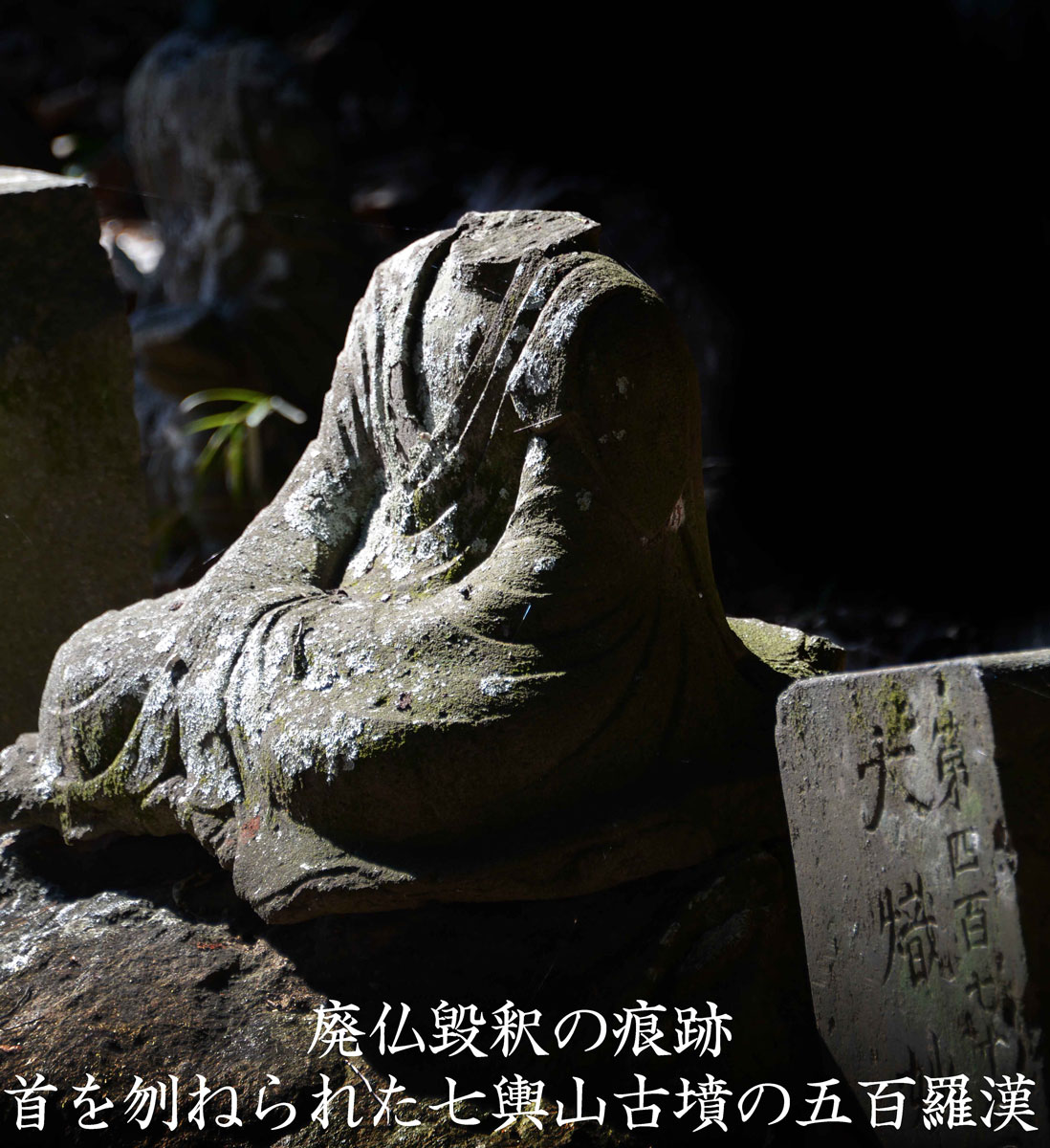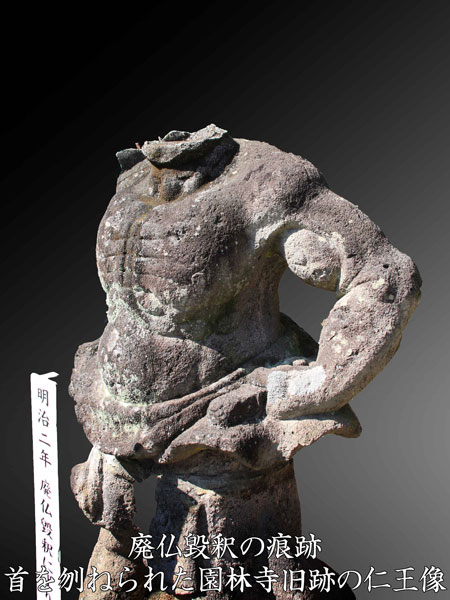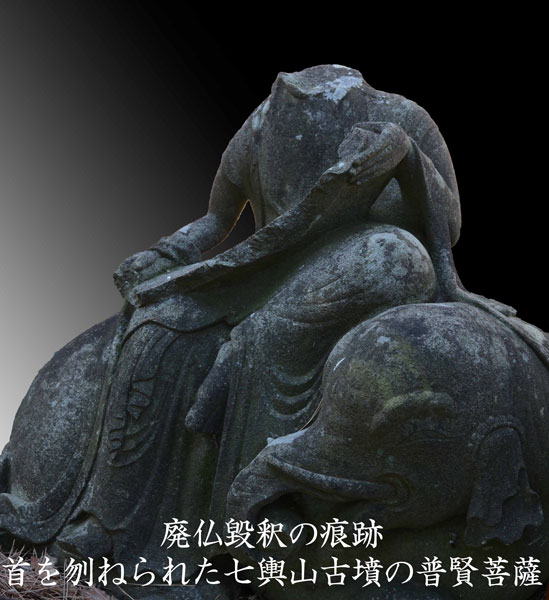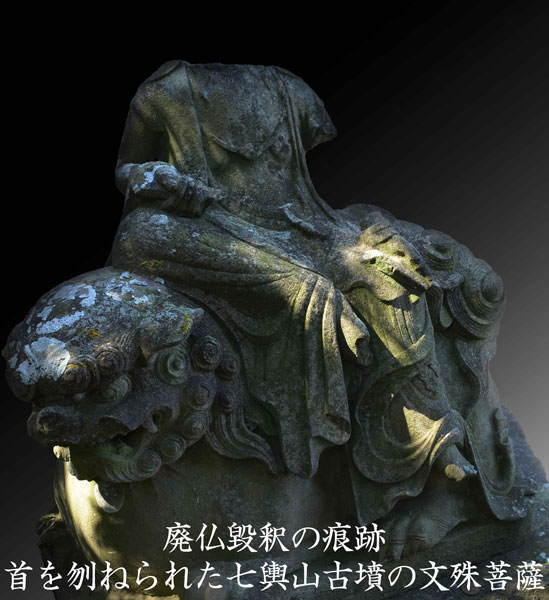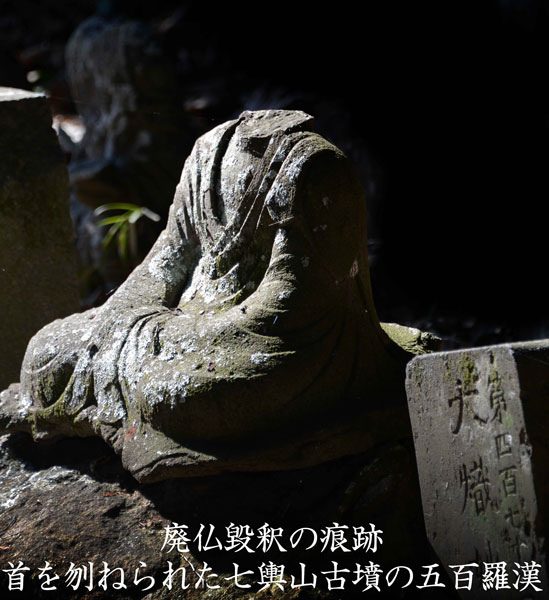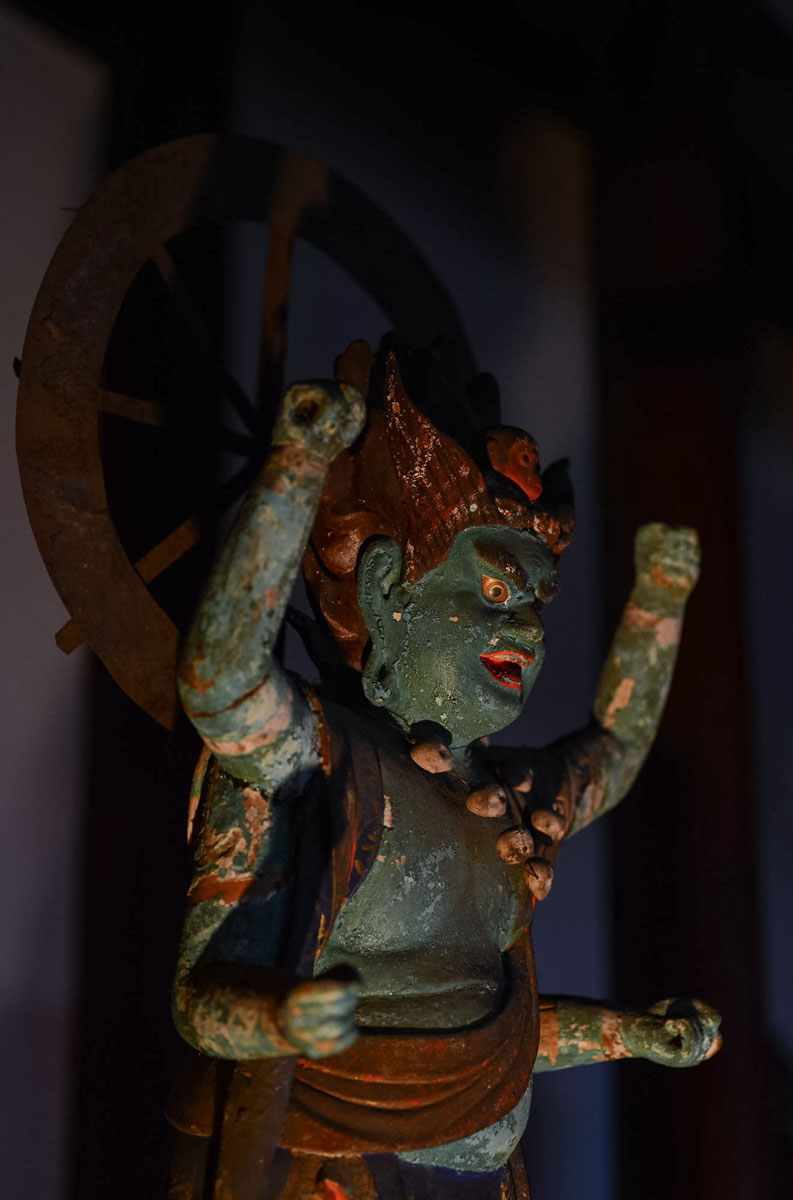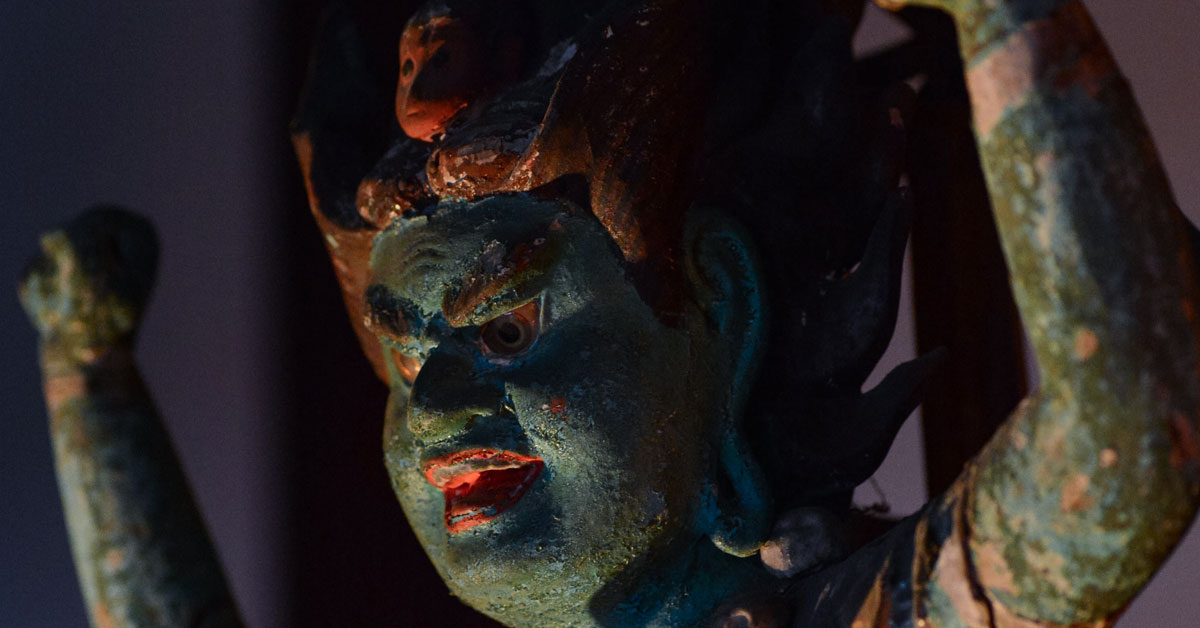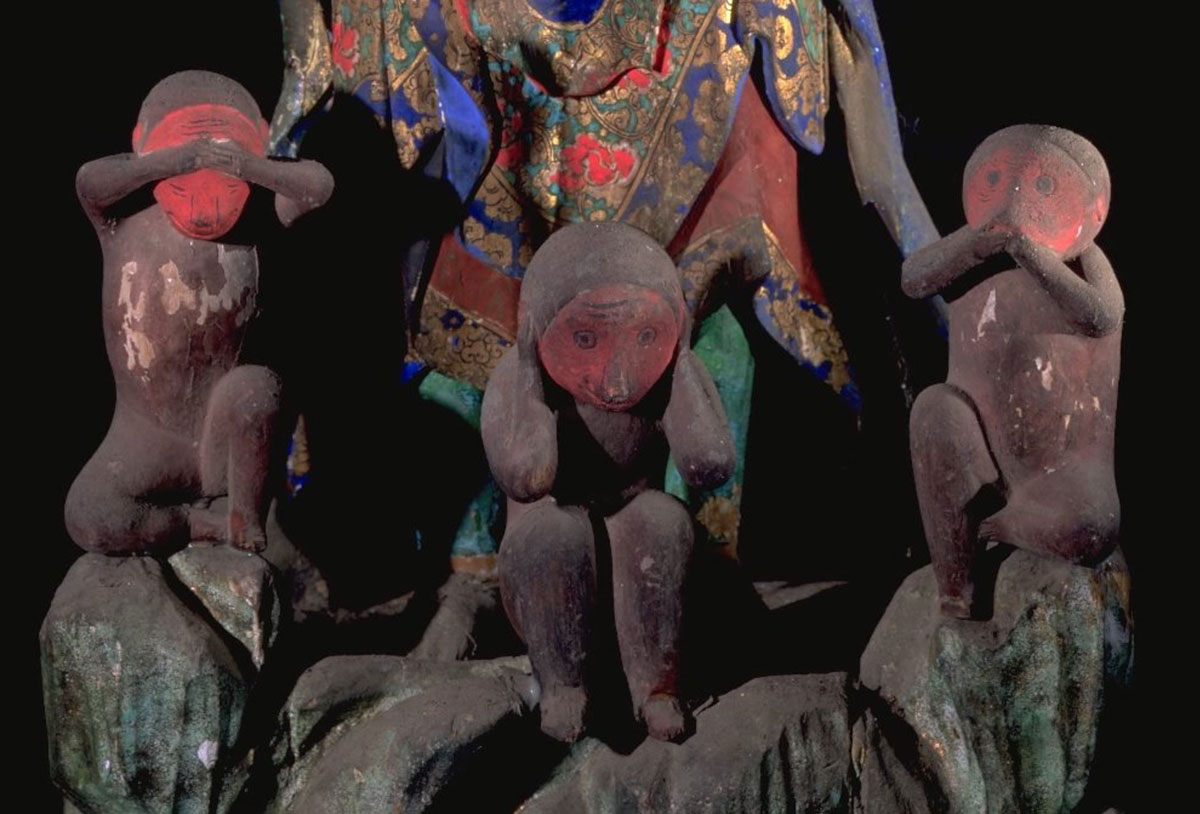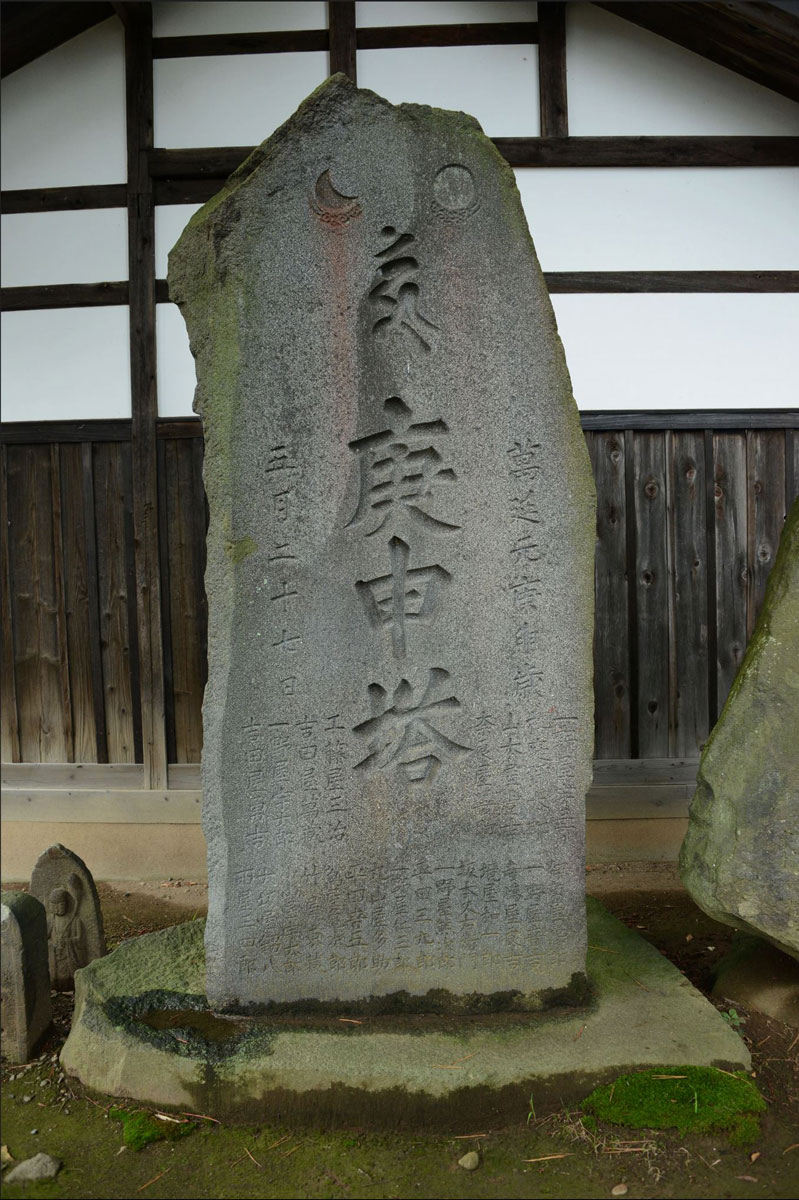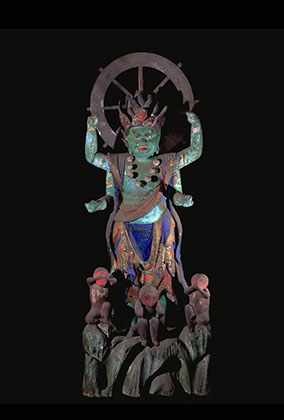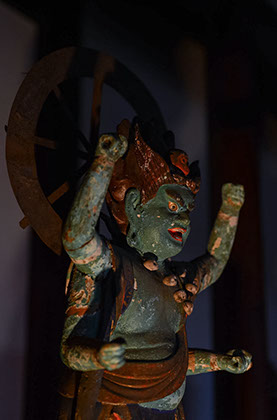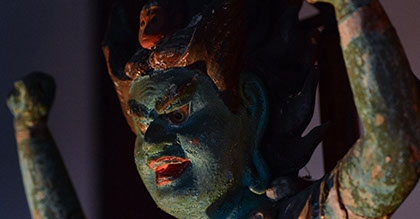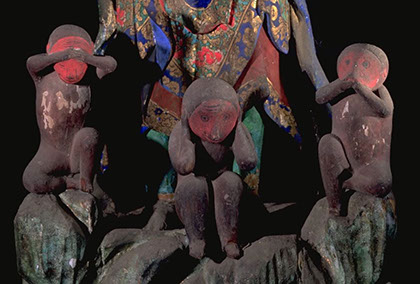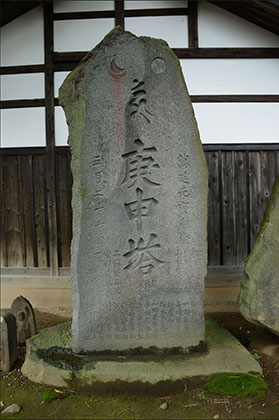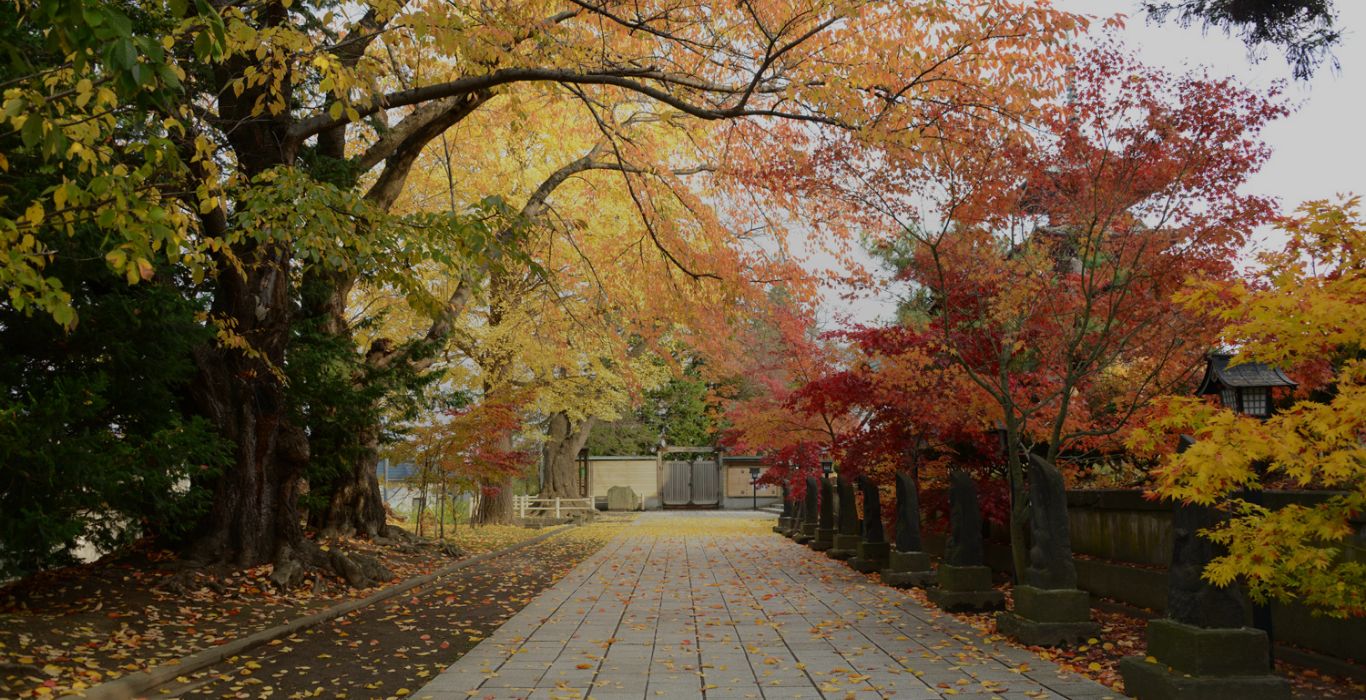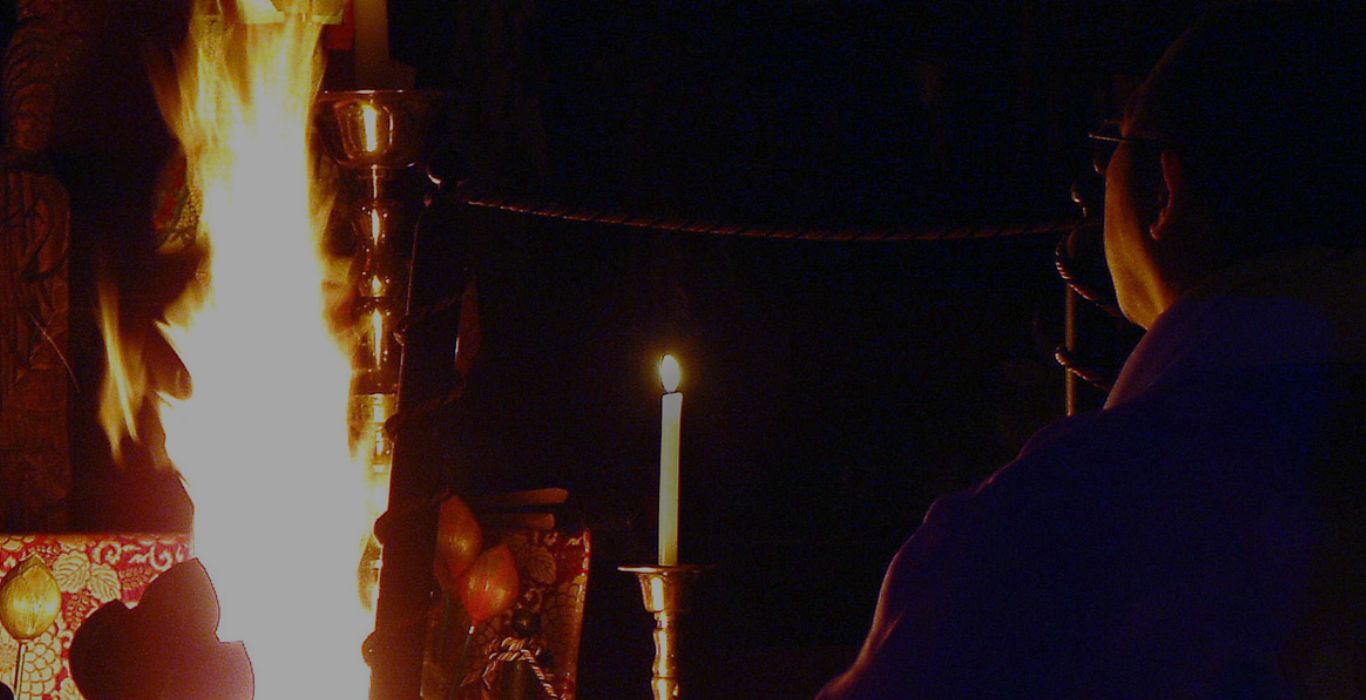The Enshrined Statues
In Shingon Buddhism, it is customary to enshrine one of the various images that exist widely in the mandala world, such as various Buddhas, Bodhisattvas (who are next in rank to Buddhas and who seek enlightenment and undergo many ascetic practices to save sentient beings), gods who live in the heavenly realms and protect the Dharma, and many deities.
Saishoin Temple has many Buddhist statues belonging to one of the above groups in various locations thanks to its history. The present chief priest is the 38th generation, and successive chief priests have put their heart and soul into the creation of Buddhist statues. In other words, the accumulation of the achievements of each successive priest is the temple buildings, Buddha images, and treasures handed down from generation to generation themselves, and important items have been repeatedly repaired and passed down to the present day. As these treasures have been passed down from generation to generation, each generation of priests has added to the richness of Saishoin’s treasures, forming the Saishoin of today.
There is a wide range of Buddhist images in Saishoin Temple, including a small Nenjibutsu Dainichi Nyorai, which is a Buddha image made of clay that can be carried around in the palm of one’s hand, Buddhist paintings on hanging scrolls, and large Niomon Nio statues. Some of the main Buddhist statues are introduced here.
Dainichi Nyorai / Goshuin Red Seal Available
Both Dainichi Nyorai in the Kongokai (world of wisdom) and Dainichi Nyorai in the Taizokai (world of compassion) are enshrined in Saishoin Temple. Dainichi Nyorai in the Kongokai world is the principal image of the Saishoin Hondo main hall, while Dainichi Nyorai in the Taizokai world is the principal image of the Five-Storied Pagoda (not open to the public).
The principal image of Kongokai Dainichi Nyorai in the Hondo main hall was completed in 1966 by Takeji Kogawa during the reconstruction of the main hall, which was lost in a fire. It is a Buddha statue carved from one single piece of kusunoki (camphorwood).
Takeji was born in Nukatsubo, Hirosaki City, and was a famous sculptor who served as a trustee of the Nitten Exhibition. This Dainichi Nyorai of the Kongokai world has a very gentle face, and when you put your hands together in front of it, you feel as if your heart is cleansed.
Visitors can immerse themselves in a peaceful journey through meditation on becoming one with Dainichi Nyorai, the very essence of the universe. Ajikan, meditation in the presence of a revered scroll with the first Sanskrit alphabet letter drawn in a full-moon circle, or Gachirinkan, meditation in the presence of a revered scroll with a circle representing the full moon, are two meditation experiences offered at Saishoin Temple. Tens of thousands of visitors come to see the Dainichi Nyorai Buddha during the New Year’s exhibit, the main deity of the temple, attracting the largest number of visitors in Hirosaki.
The Five-Storied Pagoda’s principal image, Dainichi Nyorai in the Taizokai (world of compassion), is a recreation of the main image that was lost during the abolition of Buddhism at the beginning of the Meiji period (1868-1912). It was sculpted by Masaki Konishi, a resident of Aomori City, and the opening ceremony was held on April 22, 2003. The coloring and Kirigane (a technique of cutting gold leaf into thin threads and gluing them together while painting) were done by Saiho Watanabe, a native of Hirosaki.
The Dainichi Nyorai of the Kongokai (world of wisdom) in the Hondo main hall is made of plain white wood, while the interior of the Dainichi Nyorai of the Taizokai in the Five-Storied Pagoda uses paints made from crushed and finely ground pigmented stones, a technique known in Japan since ancient times as gokusai shiki. The paintings are created from a variety of materials, including red from coral, turquoise and green from minerals, and white from shells. The space is colored in red, blue, green, and blue, and is notable for being built in an atmosphere that matches the coloring.
Nekotsuki Fudo Myoo (not open to the public) / Goshuin Red Seal Available
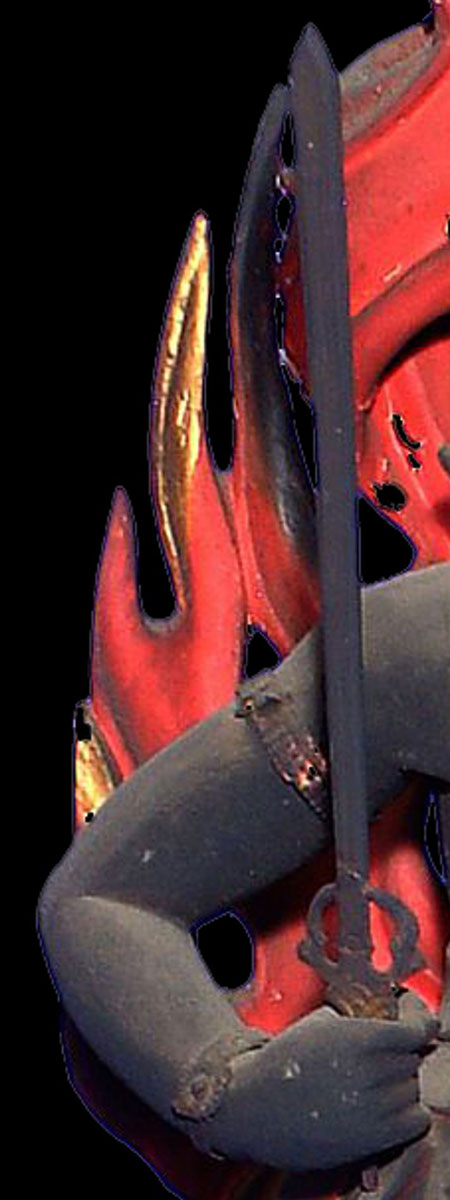
Nekotsuki Fudo Myoo was formerly the principal image of Daizenin Temple, a small temple and retreat for retired Saishoin monks. Daizenin Temple was merged with Saishoin Temple after it was destroyed during the movement to abolish Buddhism at the beginning of the Meiji period, and the priest of Daizenin Temple was appointed as the priest of Saishoin Temple. At that time, the priest brought many treasures to Saishoin Temple, one of which was the Nekotsuki Fudo Myoo.
The following is a legend from the Edo period about the Daizenin Fudo Myoo.
“The people of Hirosaki Castle had been infested with evil cats since some time ago, and they were very troubled about the situation. At the request of the feudal lord, the chief priest of the time prayed to Fudo Myoo to exterminate the evil cats, and the cats were finally driven away. At that time, Fudo Myoo’s sword, a sharp sword made to subdue demons, was covered with traces of blood that had never been there before. The people of Hirosaki were astonished and fearful at the miraculous power of the sword, and they bean to call Daizenin’s Fudo Myoo “Nekotsuki Fudo (Fudo that stabbed the cat)” and worshipped him ever since.”
Today, the temple is one of the 36 sacred sites of the Fudo Sacred Monastery in the Tohoku region and is visited by many worshippers.
Monju Bosatsu / Goshuin Red Seal Available
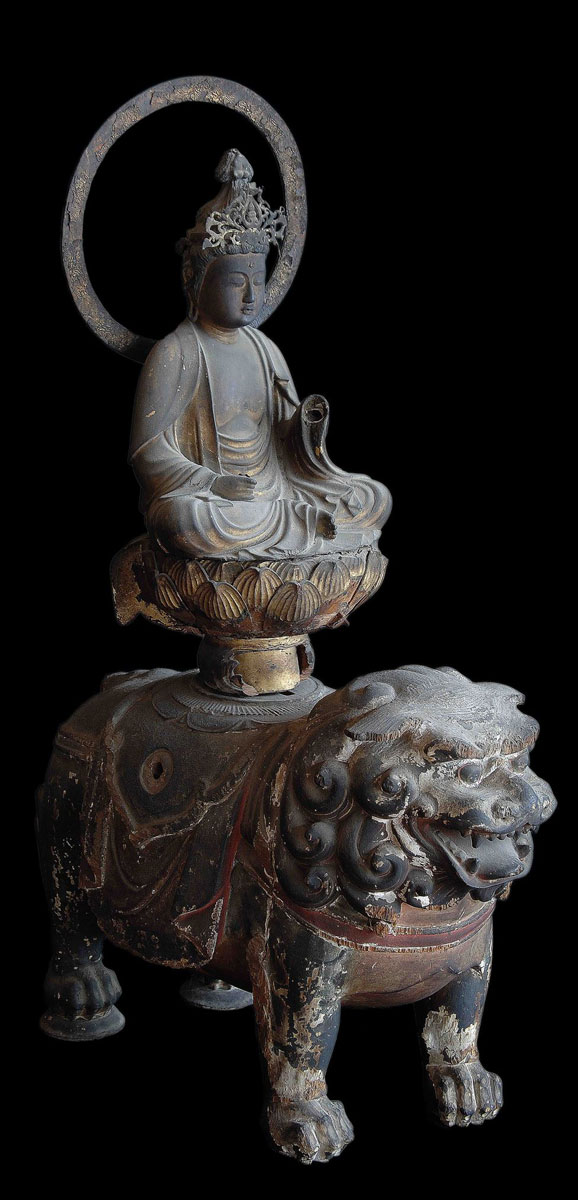
Monju Bosatsu of Saishoin Temple is mounted on a lion. It is not a large statue, but it is made of yosegi-zukuri (a type of wooden structure), and at present it is not known when it was made. It is a beautiful statue with a handsome face and well-balanced overall appearance. There is a small hall on the temple grounds for this statue, but since it is a very simple hall, it is now placed in the main hall for the convenience of visitors.
Monju Bosatsu is the guardian deity of those born in the year of the rabbit in the Chinese zodiac, one of the twelve signs of the Chinese zodiac. Monju Bosatsu is part of the hattabutsu faith that believes that there are eight Buddhas in the twelve directions of the zodiac. Here in Tsugaru, it is called “Ichidai-sama” instead of “Hattabutsu”, and is deeply worshipped as “Monju-sama of Saishoin.” Many people come to the shrine to pray for their babies’ first visit to the shrine, for their children’s “Shichi-Go-San” celebration, and for the exorcism of bad luck in the year of bad luck (in Japan, the age of 33 for women and 42 for men are considered to be the years of bad luck).
In the precincts of the shrine, there are a number of rabbit statues, including a guardian rabbit donated by people who believe in the “Ichidai-sama.” As of 2023, there are seven statues of rabbits in Saishoin Temple. The number seven is considered a lucky number in Japan, as illustrated with the Seven Gods of Good Fortune, which symbolize happiness. It is believed that finding all seven statues will bring one happiness.
Gozu Tenno (not open to the public); Goshuin Red Seal Available
Gozu Tenno at Saishoin Temple is called the Gozu Tenno-son. It is said to ward off plague and disease, and is revered and praised in the local area. The temple was especially famous for the opening of the temple to the public at the end of the Edo period. However, due to the abolition of Buddhism in the early Meiji period (*1), the Daienji Temple located here was relocated to another location, leaving its buildings and fixtures intact in order to maintain its status as a Buddhist temple. Saishoin Temple was located in a different place at that time, but all of its buildings were destroyed, and the temple was moved to the site of Daienji Temple in order to maintain its status as a temple. Everything that had been Daienji Temple was taken over and maintained by Saishoin Temple, and it has risen and fallen to the present day.
The current Saishoin Gozu Tenno-son was the Gozu Tenno of Daienji Temple until the beginning of the Meiji period. Although there have been various events in the historical background, the wishes of the people have continued unchanged to the present day. “Gion Erei Taisai,” also called Yoimiya, has been held on June 13 of the lunar calendar since ancient times, and is the largest festival in Hirosaki.
Hiroo Takenami, the 7th Nebuta master, focused his attention on Gozu Tenno-son and created a nebuta float of “Gozu Tenno” for the 2023 Aomori Nebuta Festival. The Nebuta won both the “Nebuta Grand Prize” and the “Best Creator Award,” and will be displayed for one year at the museum “Nebuta House Wa Rasse” in front of Aomori Station. Since the movement to abolish Buddhism in the Meiji era, the Saishoin Gozu Tenno-son has rarely seen the light of day, and now, more than 150 years later, people are able to see it in person.
*1 During the movement to abolish Buddhism at the beginning of the Meiji period (1868-1912), most of the statues of Gozu Tenno enshrined throughout Japan were destroyed. When the government of the Meiji Restoration attempted to create a new emperor, Gozu Tenno, which bears the title “Tenno,” a Buddhist-derived image of Buddha, was extremely disturbed because it read the same way as the word that means emperor, even though the characters and meaning were different. In addition, there were nationalistic scholars in the government at that time who held extreme Buddhist views and were aiming for a religious coup to switch from the Buddhism-centered status quo of the time to a Shinto-centered “Shinto state.” In the early Meiji period, the Grand Council of State issued a decree called “Shinbutsu Hanzenrei” (a decree issued by the executive branch of the government), which resulted in the destruction of Gozu Tenno. This is regarded as the beginning of the worst loss of cultural heritage in Japanese history.
Nio-zo / Goshuin Red Seal Available
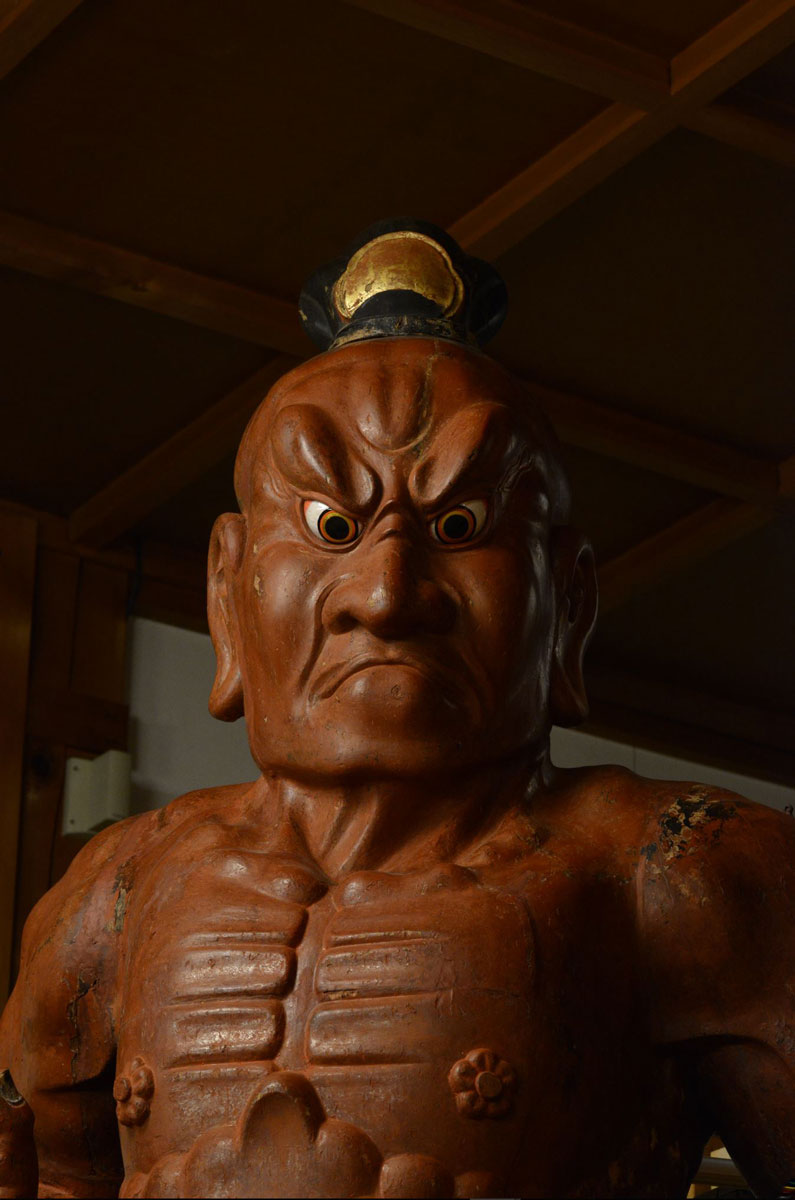
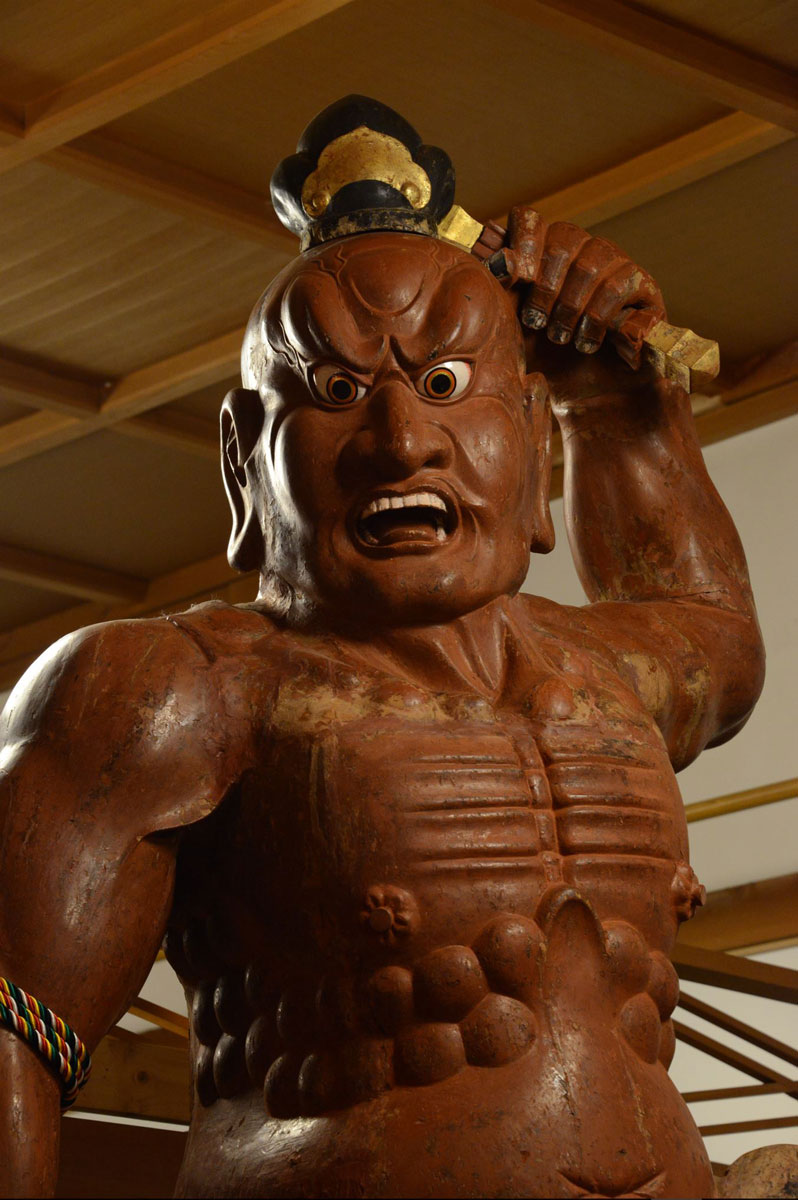
It was once believed that Saishoin Temple received the Nio statues from Hyakutakuji Temple in the Hyakuzawa area, but during the reconstruction work from 2019 to 2023, an inscription with the date “March 1799” was found inside the statue. This proved that the Nio statues had existed at this site from the very beginning.
The following is a commentary by Hirotoshi Sudo,
professor emeritus at Hirosaki University.
Nio statues stand at the entrances of temples and are important to protect the space and visitors.
However, due to their size and structure, they are only found in a limited number of temples because of the large cost involved. Wooden Buddhist statues are destined to be repaired and maintained every hundred or two hundred years due to the nature of their materials and structure.
The Nio statues standing at the gate are especially vulnerable to damage due to constant exposure to the outside air and changes in temperature and humidity over the years, and the weight of the large statues is also a burden. For this reason, only famous temples in Aomori Prefecture, such as Enkakuji Temple in Fukaura Town and Choshoji Temple in the Shigemori area of Hirosaki City, have preserved old Nio statues. The Saishoin Nio statue is even older than those temples and has stood on the southern plateau of Hirosaki Castle for more than 360 years, protecting not only the Buddhist priests but also the people of the castle.
Shomen Kongo
Shomen Kongo is a Buddhist image of the custom and folk belief of “Koushinmachi,” which flourished in the Edo period (1603-1868). Koushinmachi was an event in which common people in the Edo period gathered together to share a meal and drink all night on the day of Kanoesaru, the Chinese zodiac sign that falls once every 60 days.
It was believed that the three corpse bugs lived in the human body, and that on the night of Koushin, they would escape from the sleeping body and shorten the life span of the person. Therefore, people tried to prevent the insect from escaping by staying awake all night. In some years, there was seven days of the Koshin day, which was called Shichi-koshin. The Shichi-koshin celebration was special, with special monuments built in those years. In Saishoin Temple, there is a small hall called Koshindo and a stone monument.
Juniten Painting and Hanging Scroll (not open to the public)
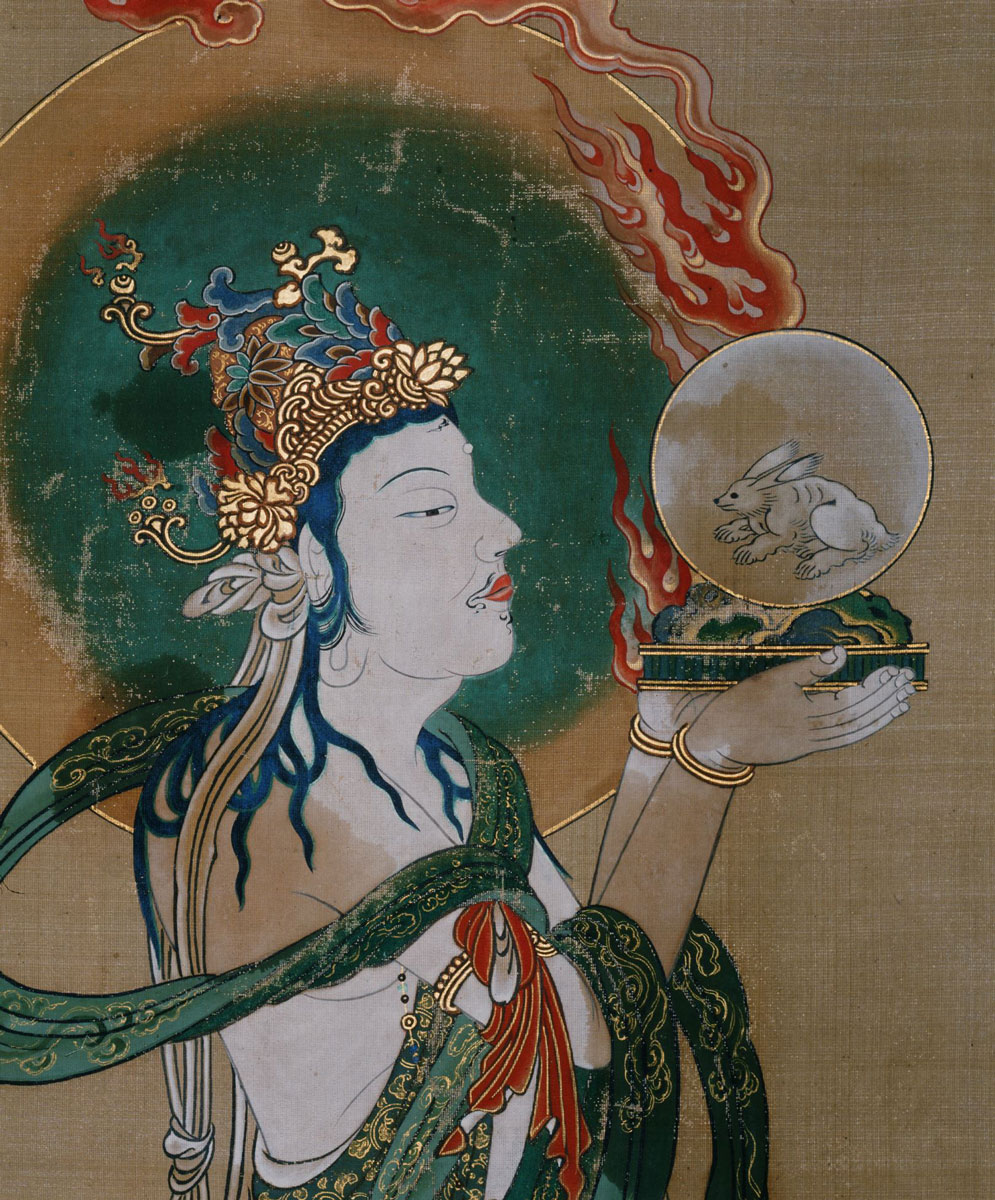
The Juniten (the twelve deities) are not high ranking Buddhas such as Nyorai or Bodhisattvas, but rather “foreign deities” in ancient India, and are ranked as celestial beings that are responsible for the protection of Buddhism and the Buddhist world.
The Juniten are the very important deities in Shingon Buddhism, as a folding screen depicting the Juniten are used during the Denbo Kanjo, the greatest ceremony of Shingon Buddhism, celebrating the transmitting and passing on the secret teachings handed down in the 1200-year tradition.
Saishoin Temple’s Juniten Painting is a masterpiece by Masanobu Utanosuke, a painter of the Tosa school. The present Juniten at Saishoin is a hanging scroll, but it is thought that it may have originally been a folding screen.
On the surface of the entrance door to the shinden hall, where temple lodging is offered at Saishoin Temple, guests are greeted by Gatten, the twelfth of the twelve deities of Juniten, who holds the moon where a rabbit dwells. Legend has it that the moon held by Gatten, whose ancient name is Soma, and the pure soul of the rabbit will later be reborn as Buddha (Shakashiddhartha).
On the reverse side of the entrance door to the shinden hall is the “Udoshi Ichidai-sama,” the guardian deity Monju Bosatsu, who protects the guests.
Dainichi Nyorai of Kongokai Hanging Scroll
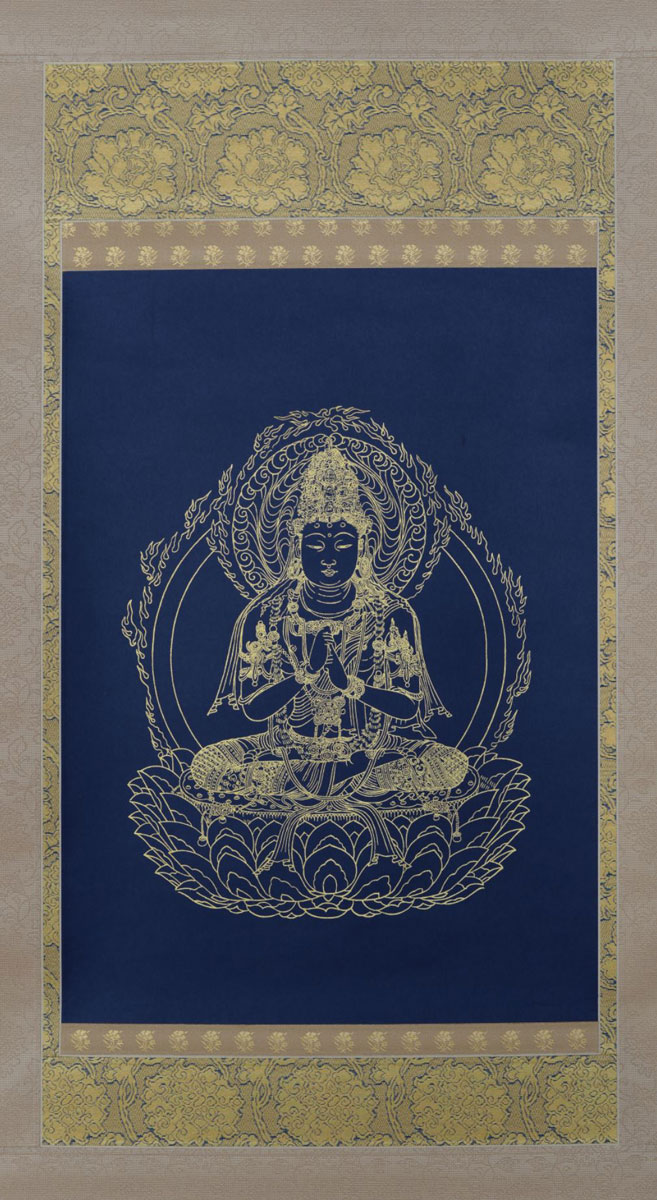
This small hanging scroll is traditionally painted with gold paint on dark blue paper.

